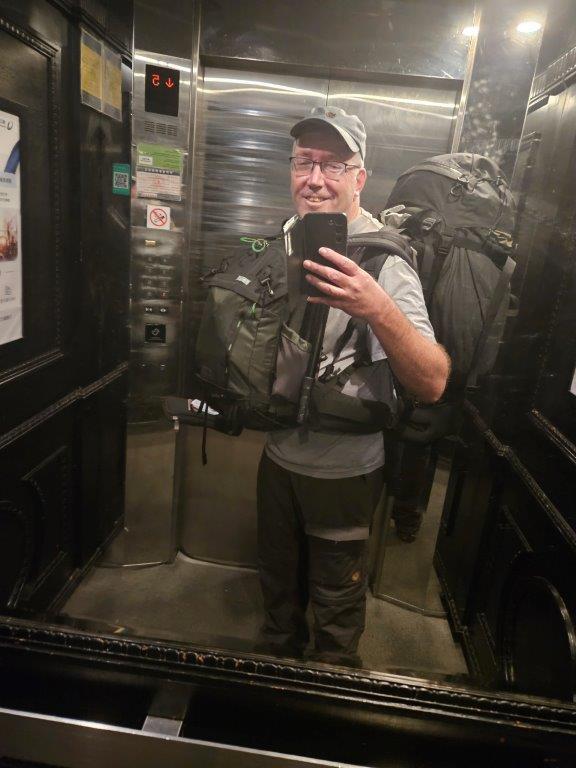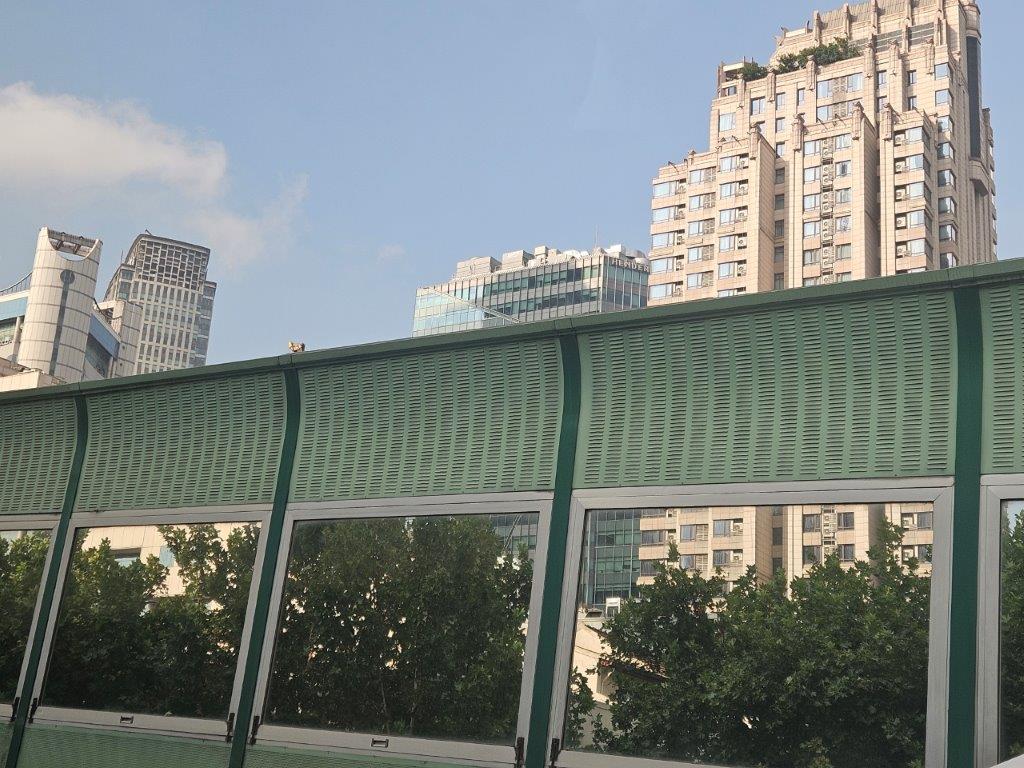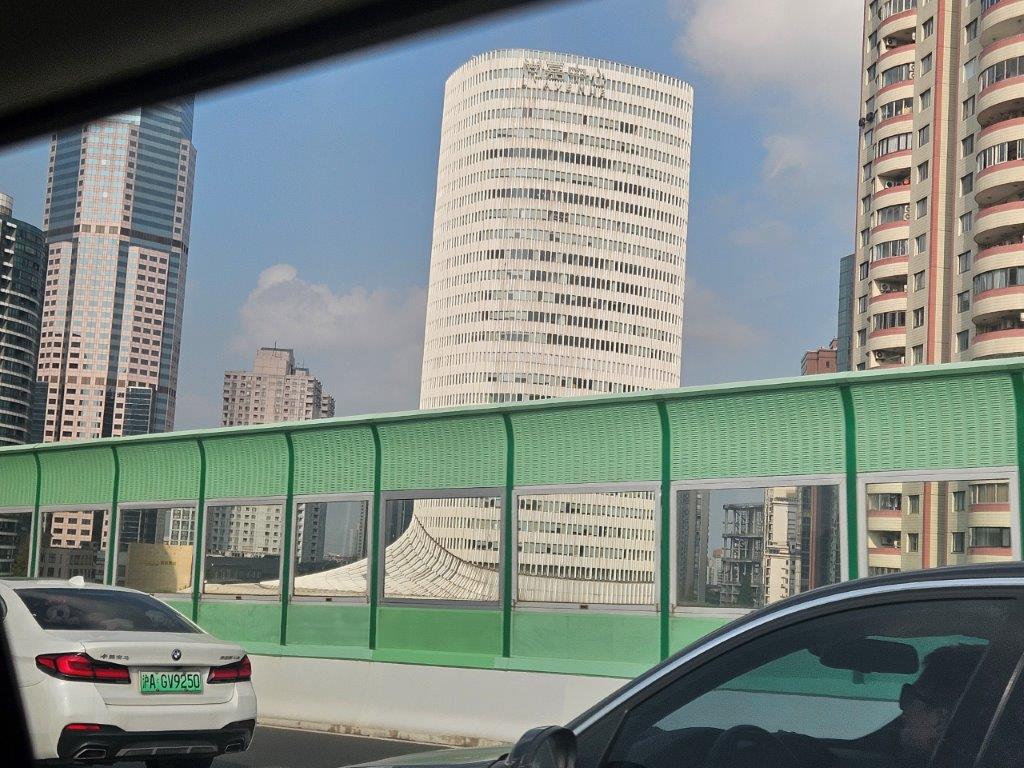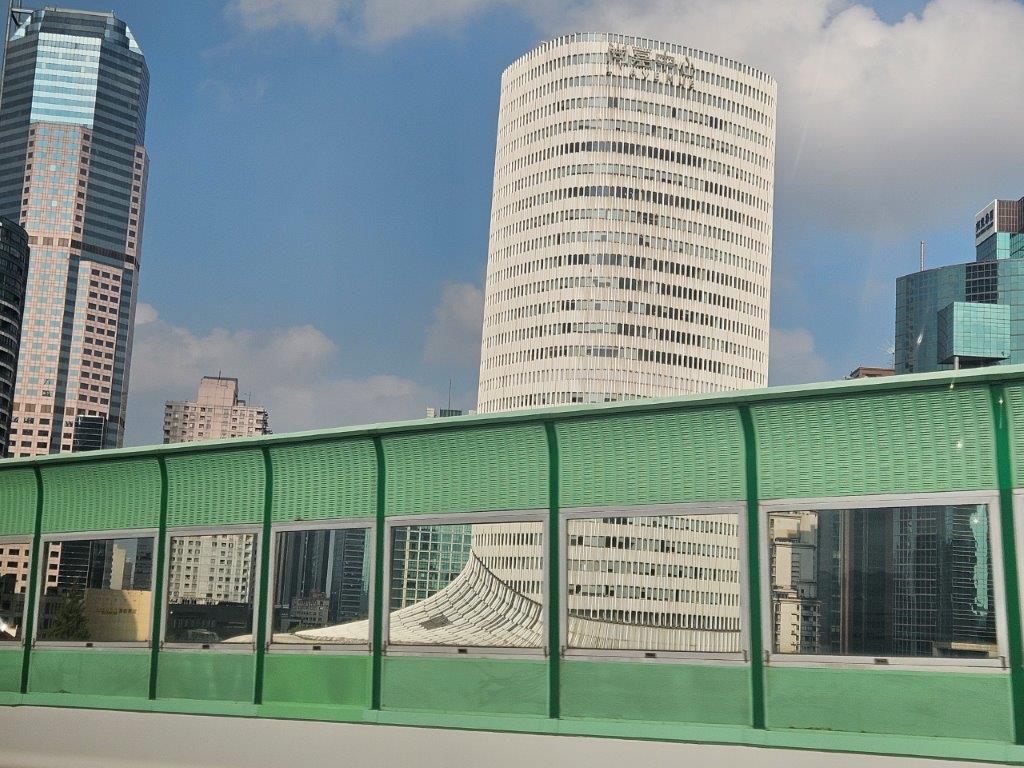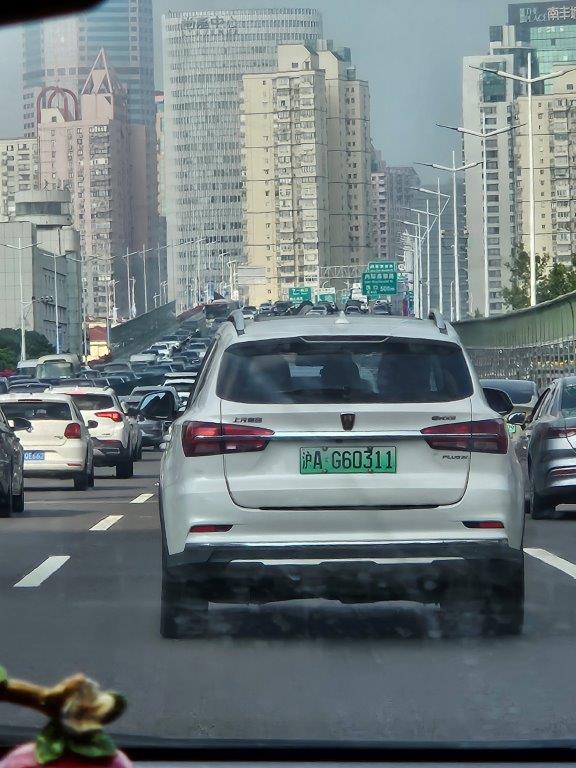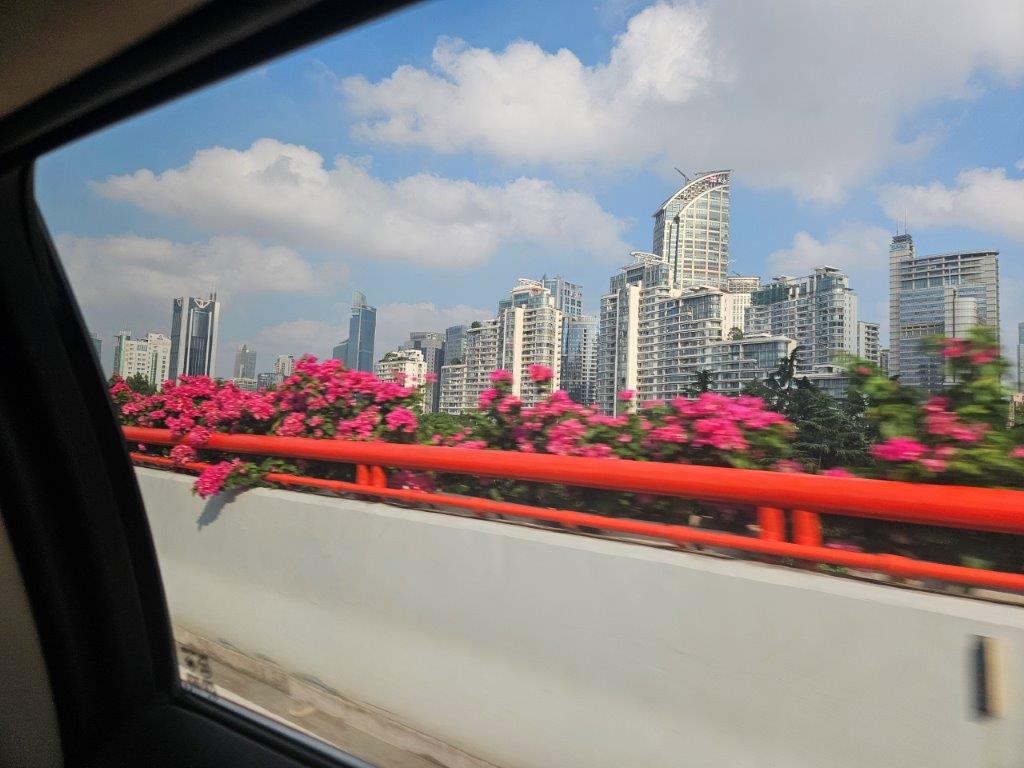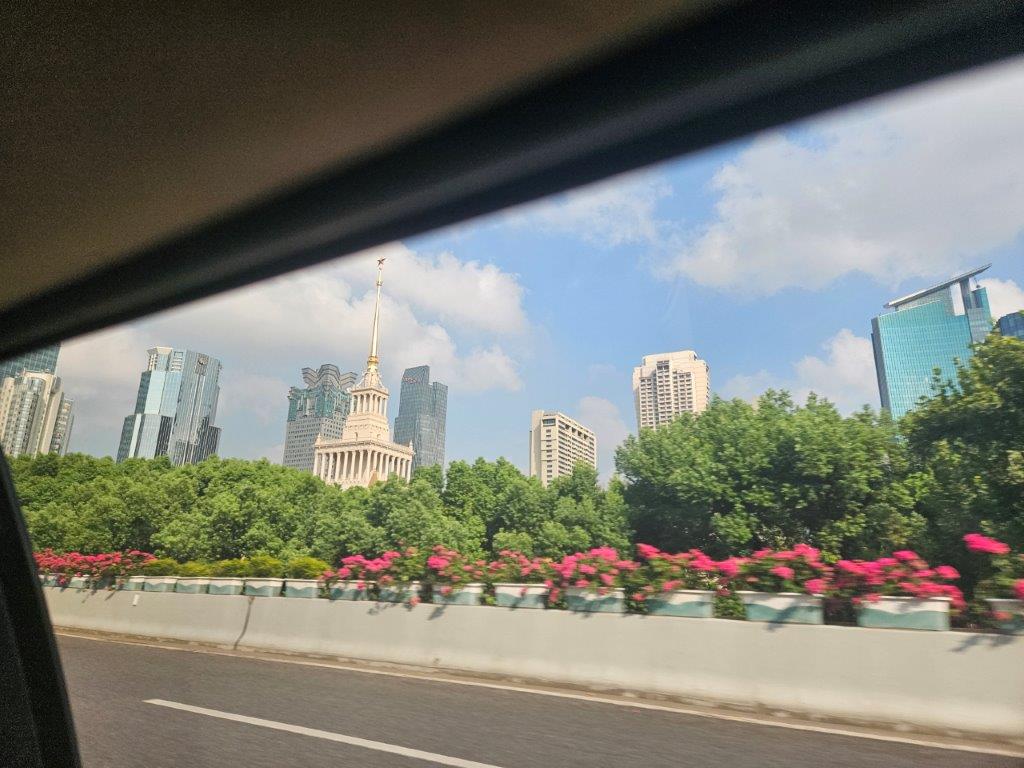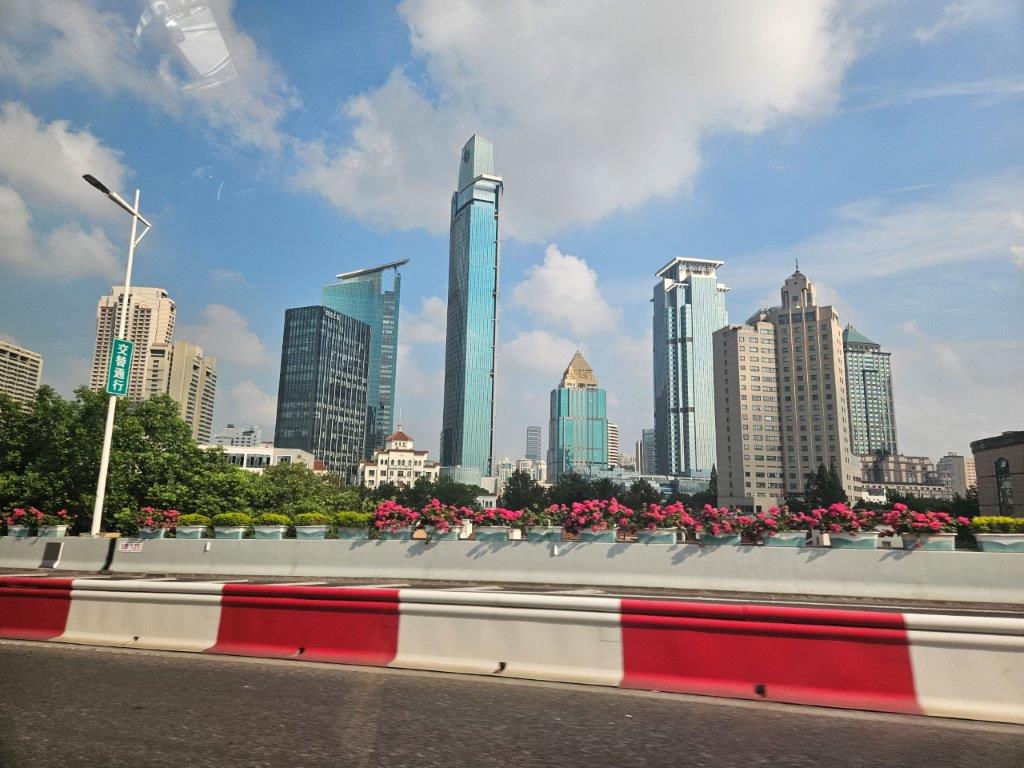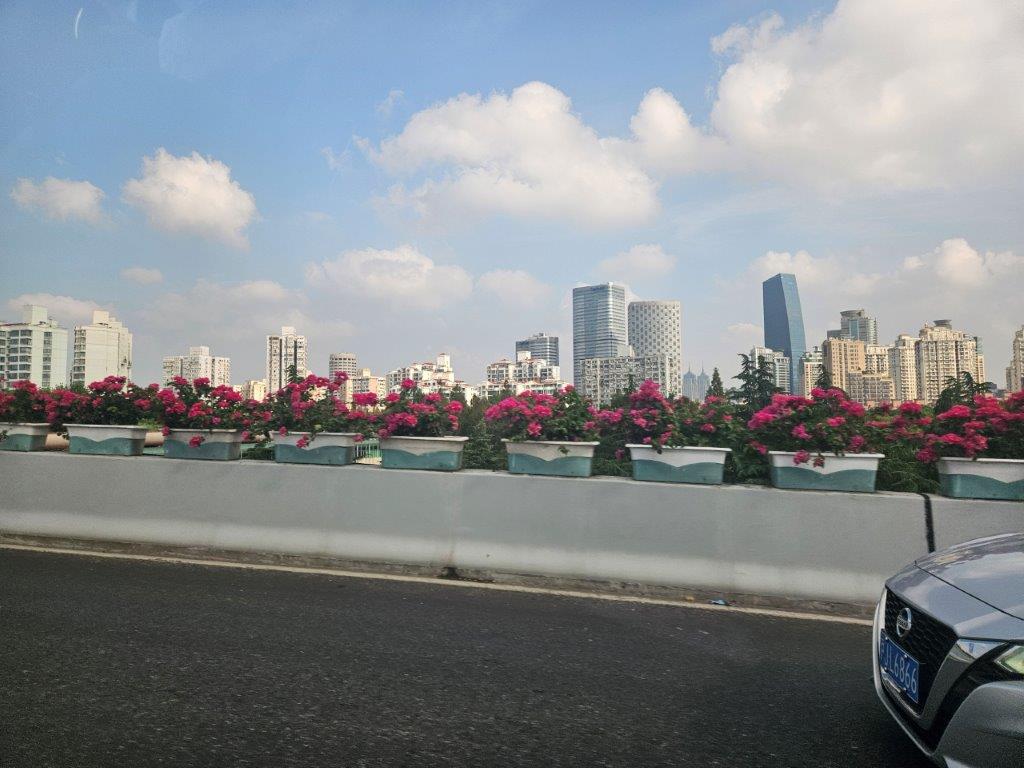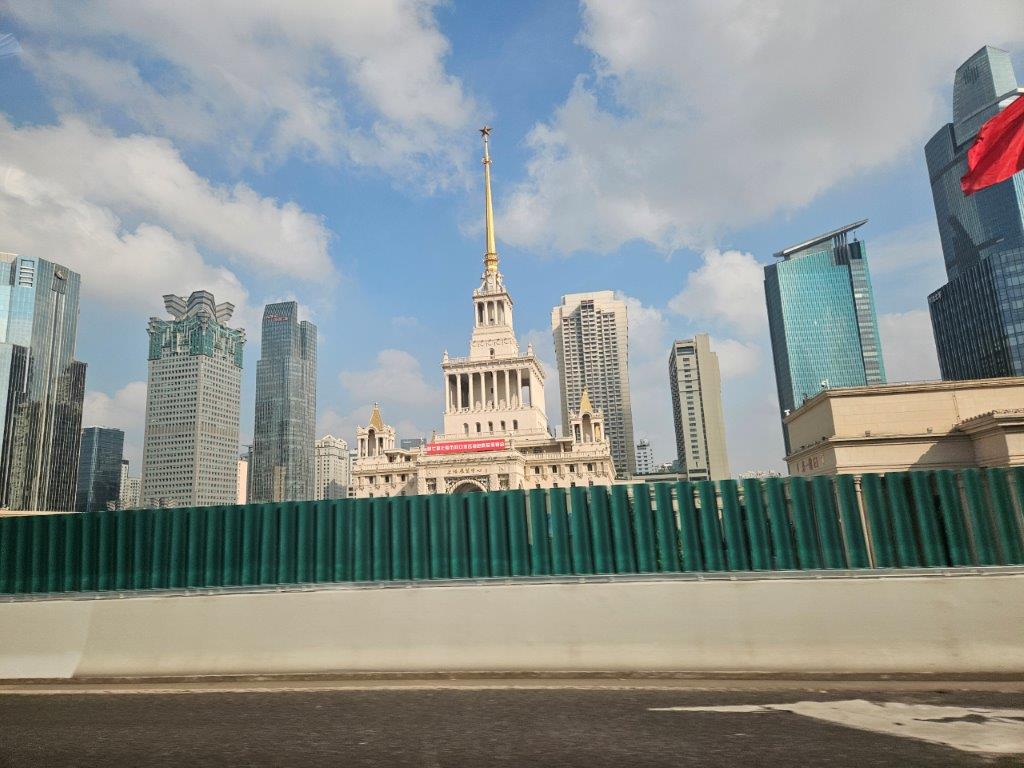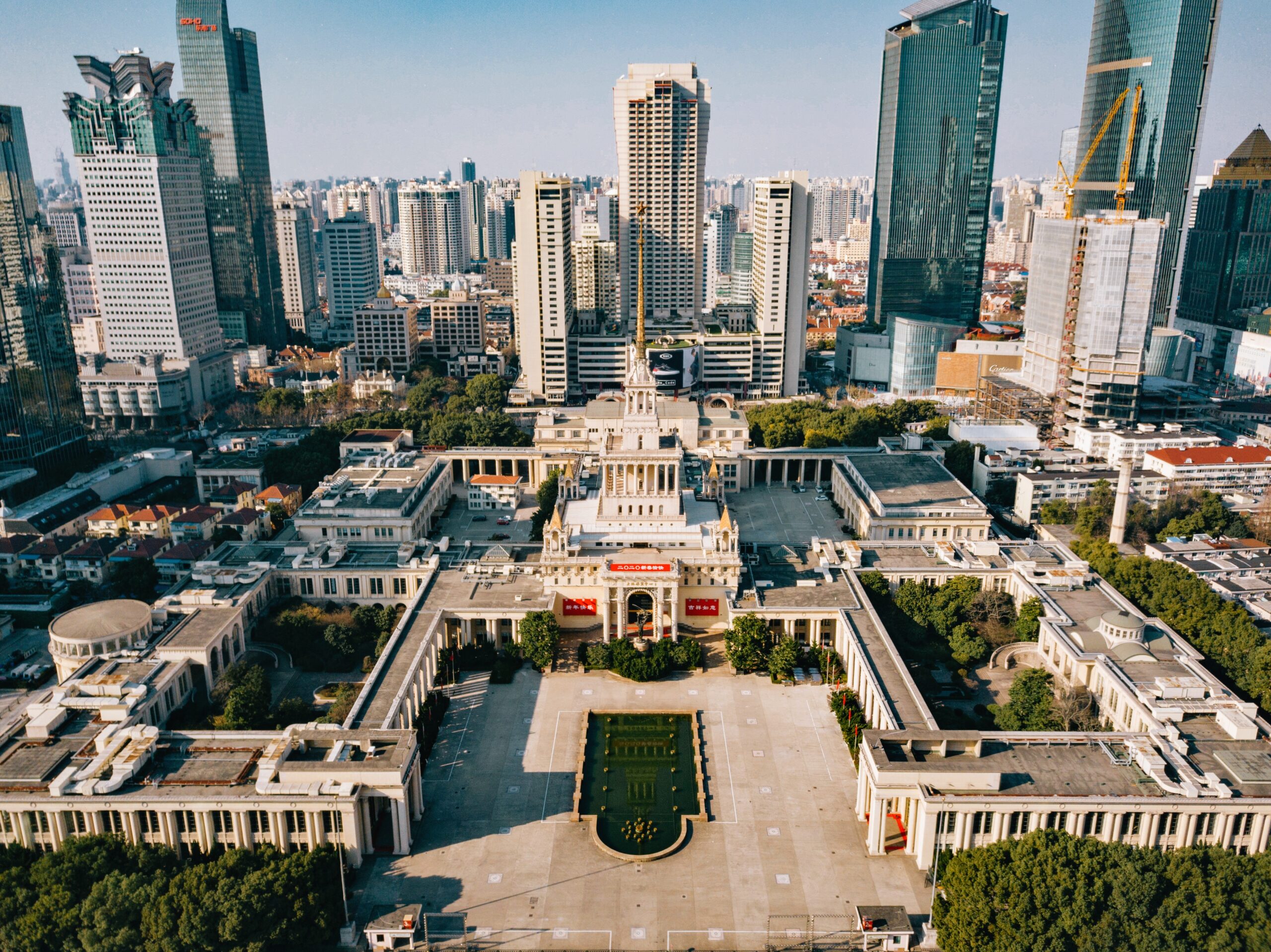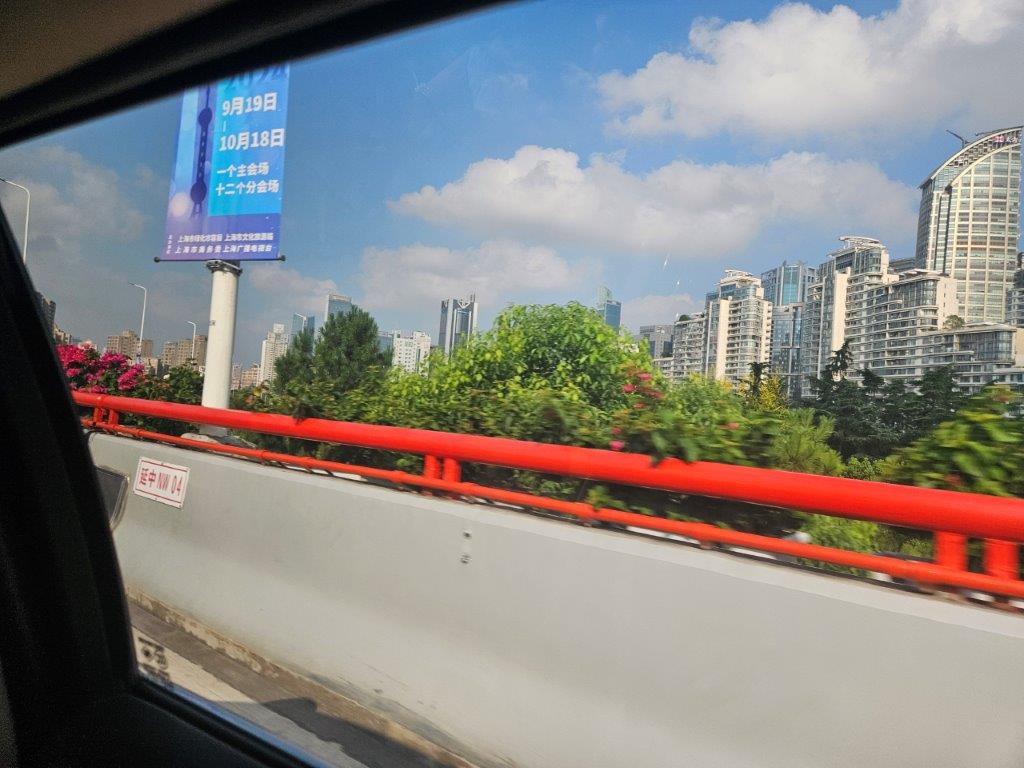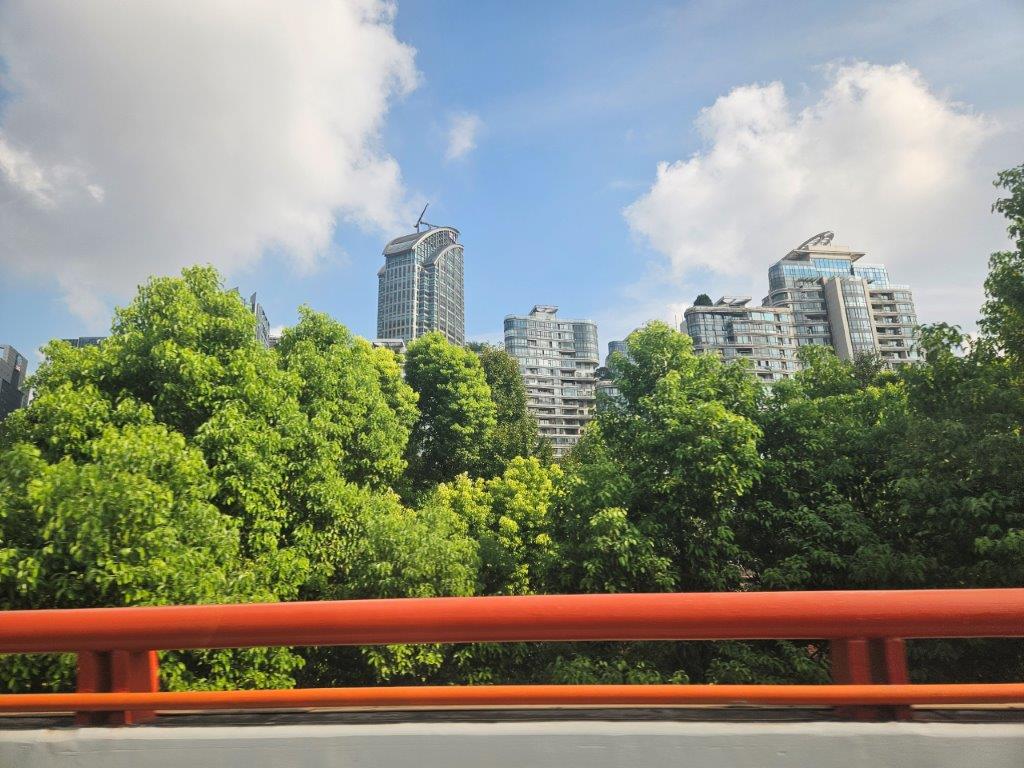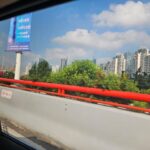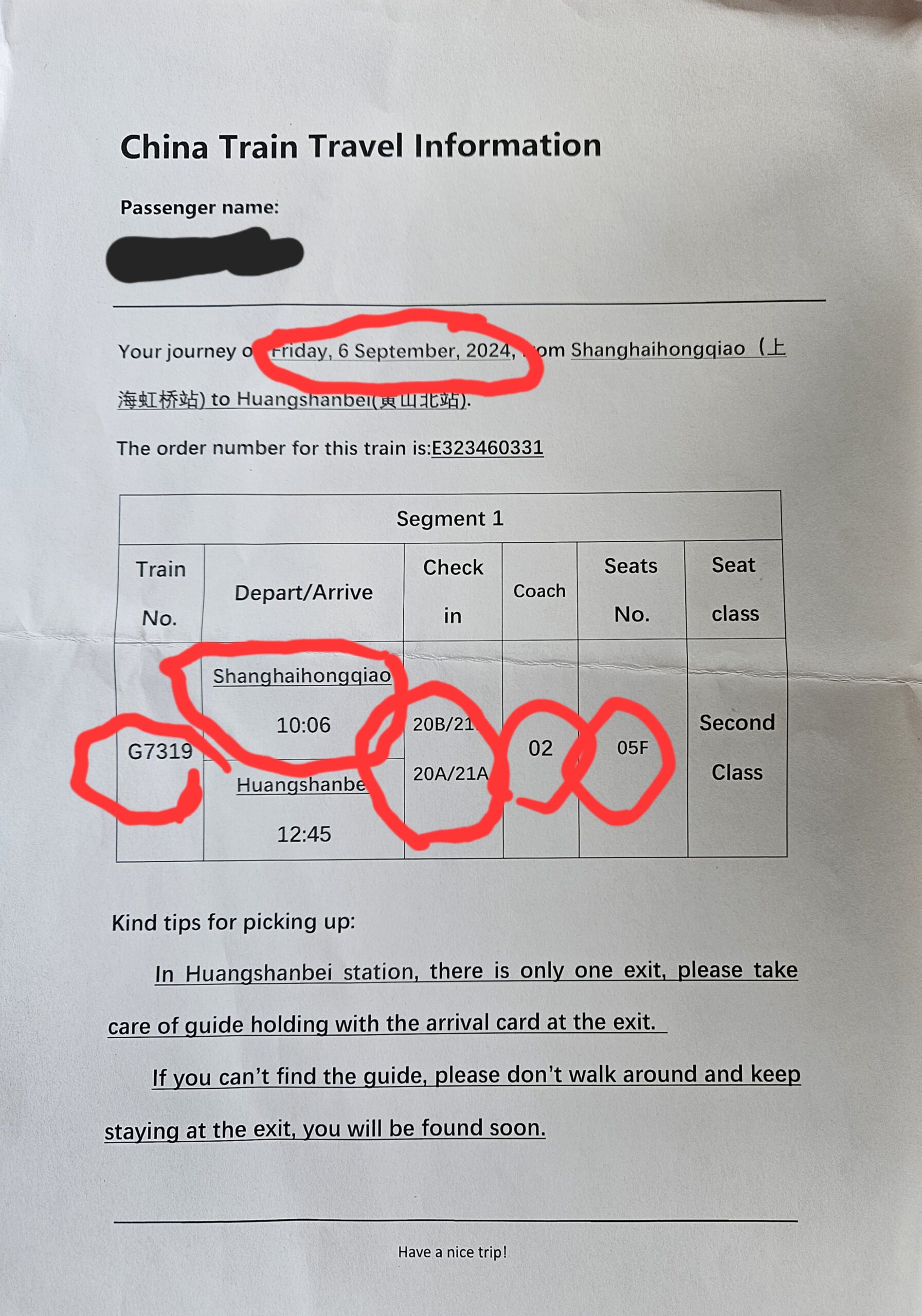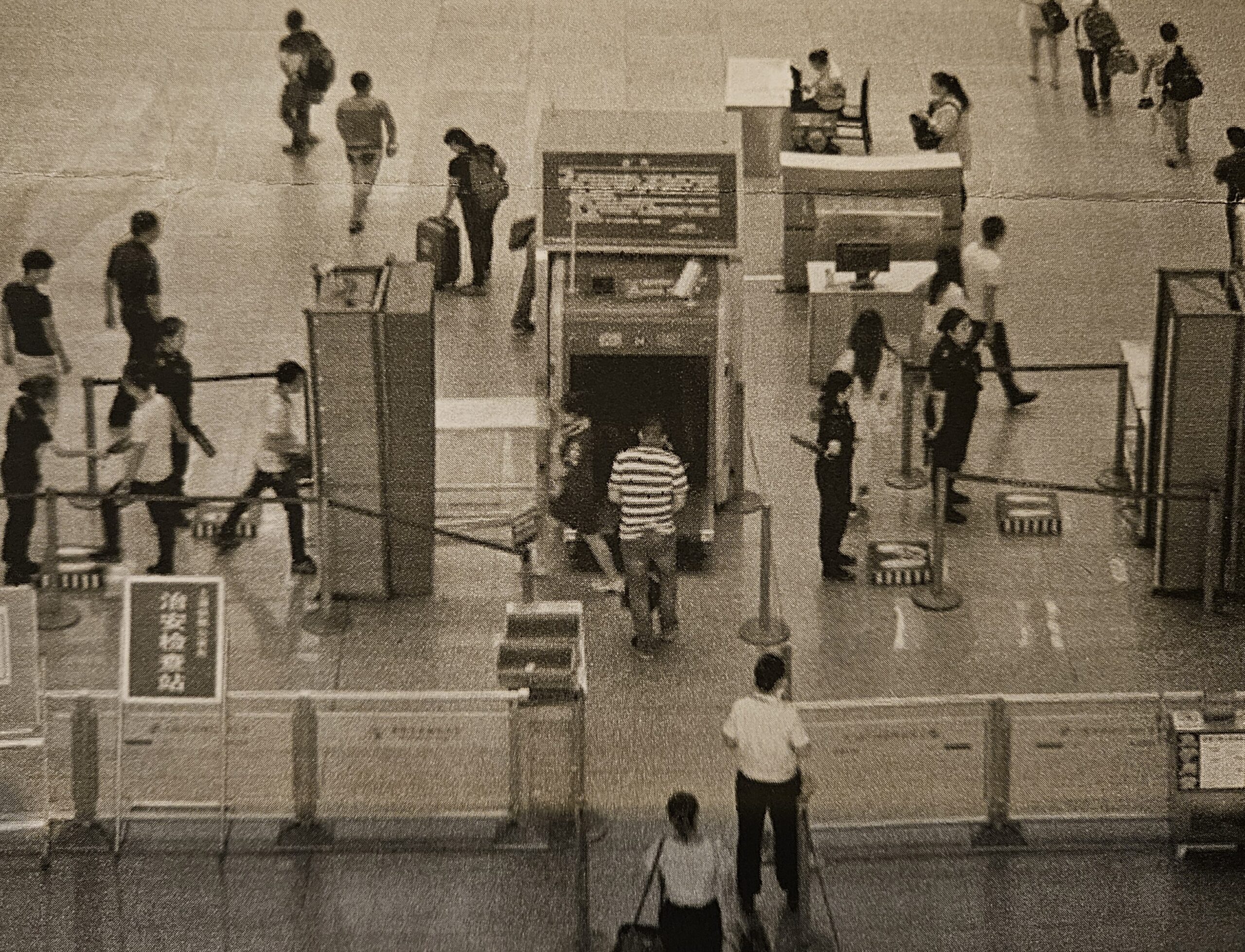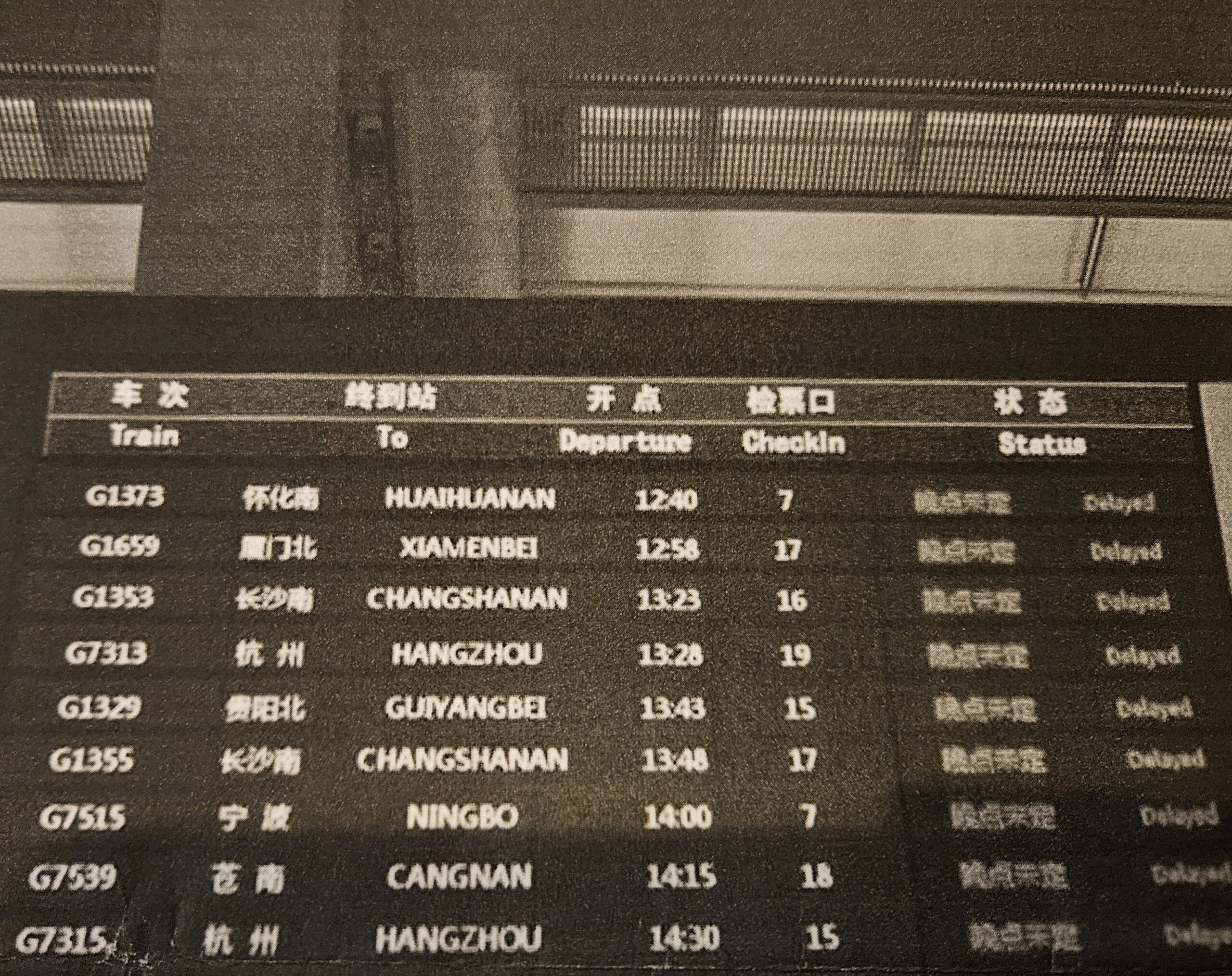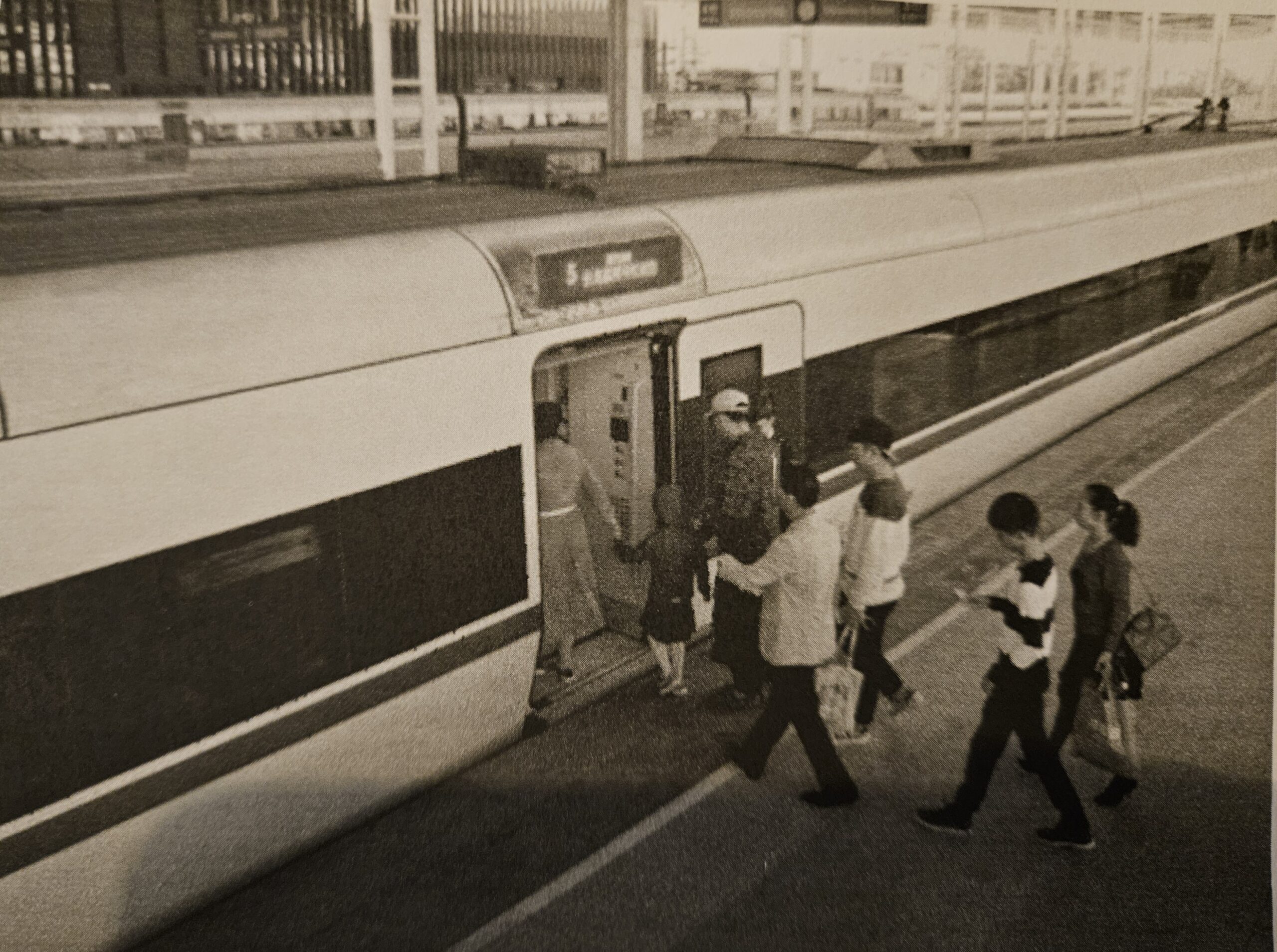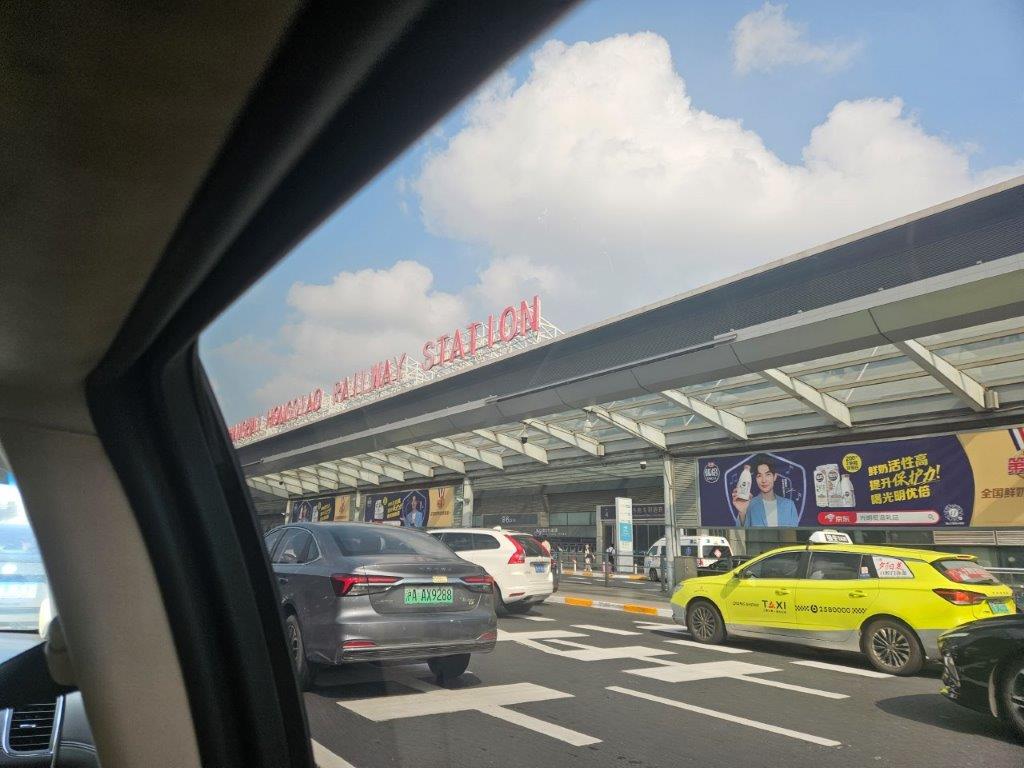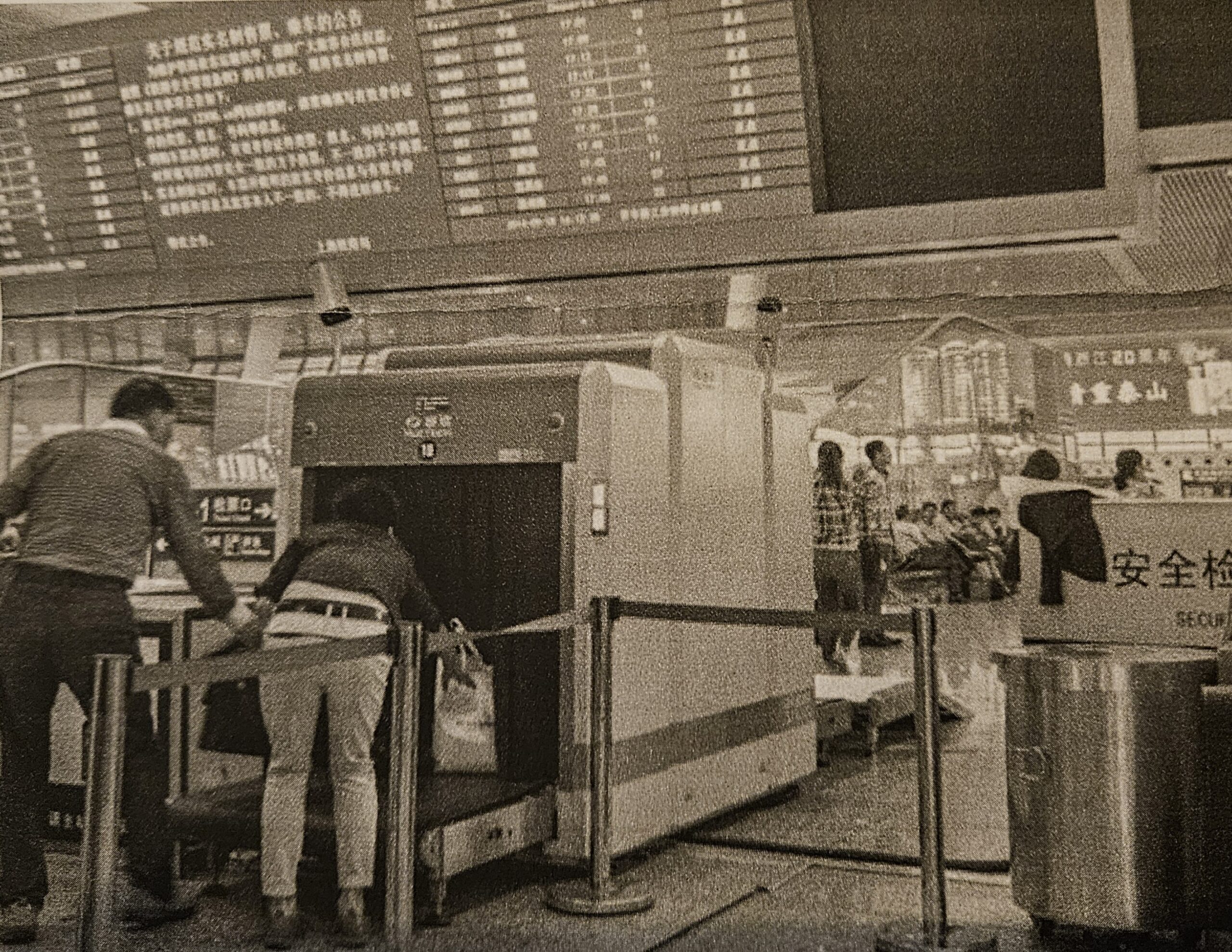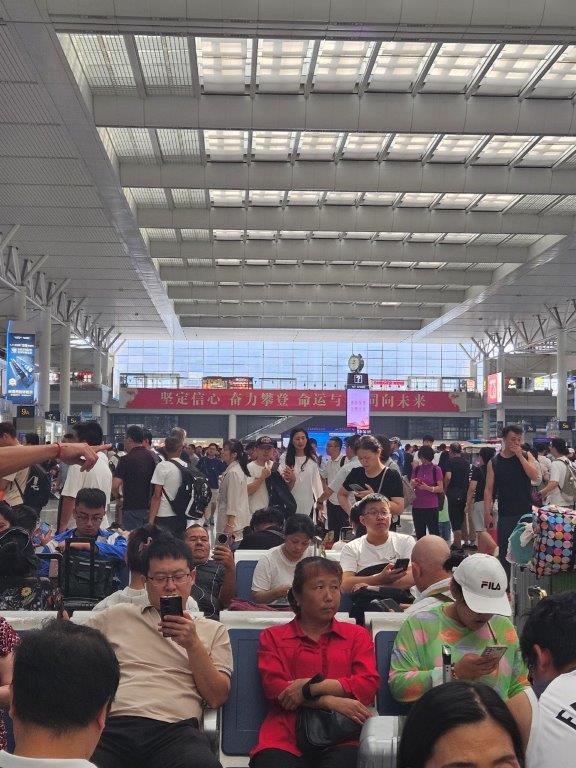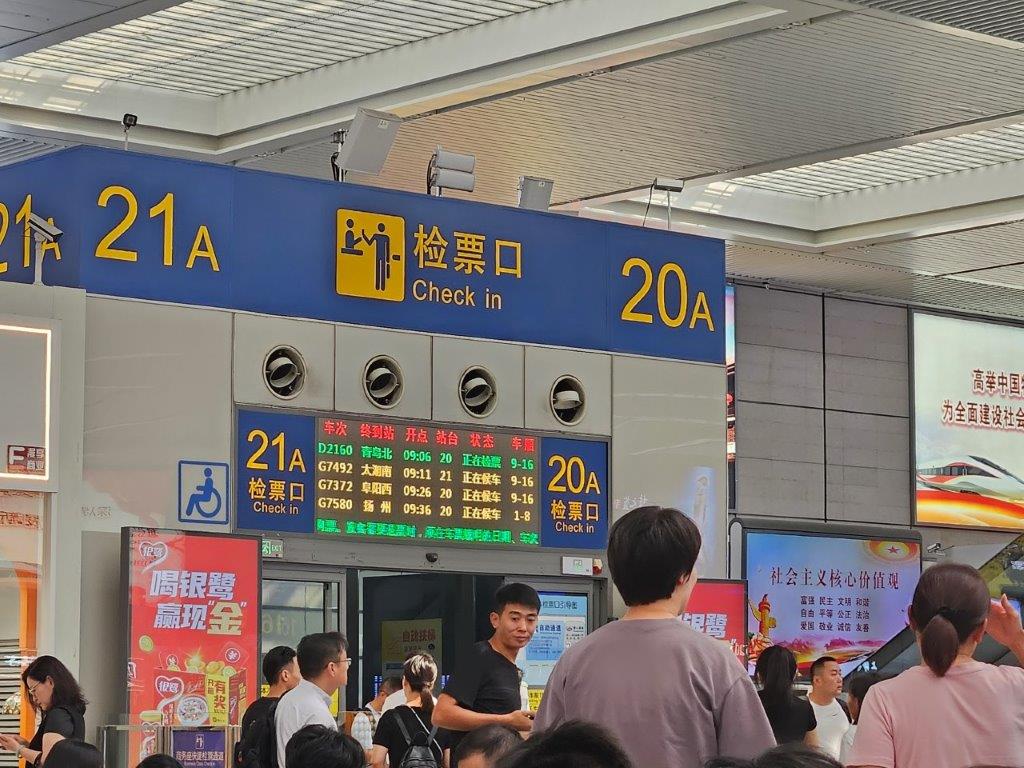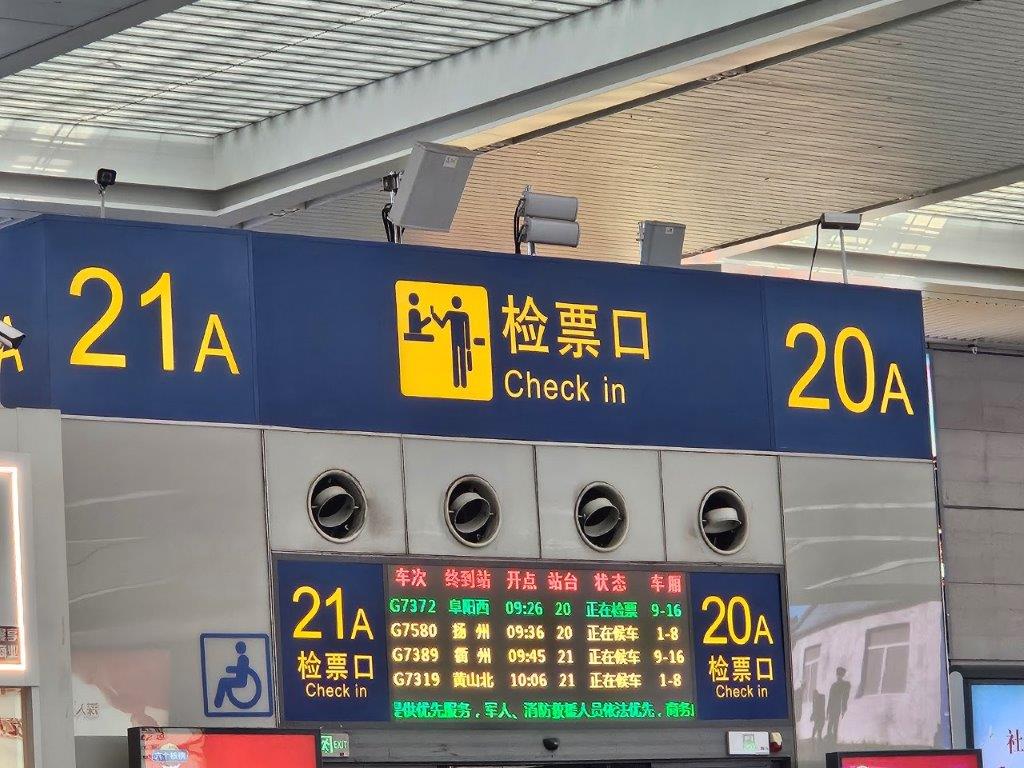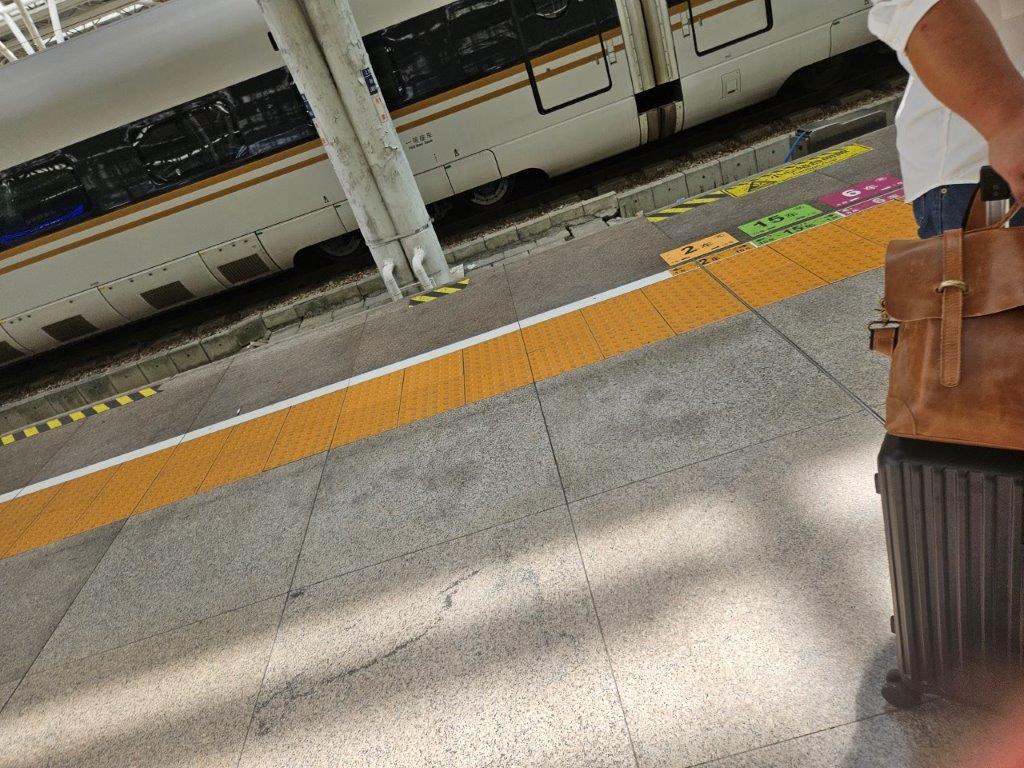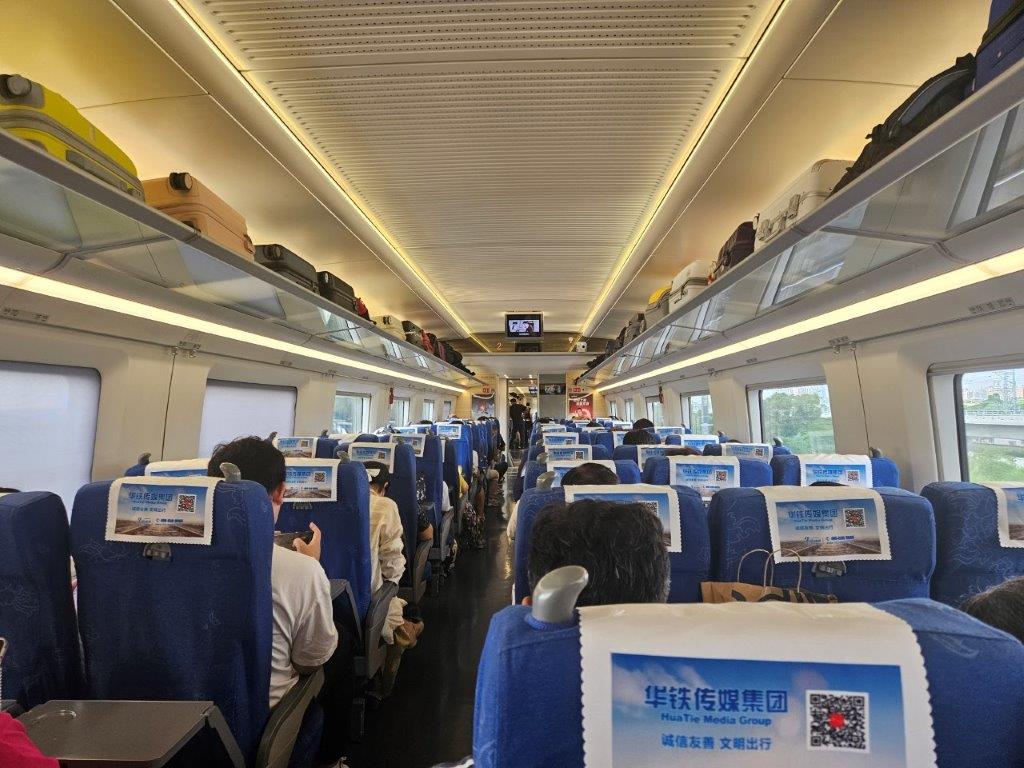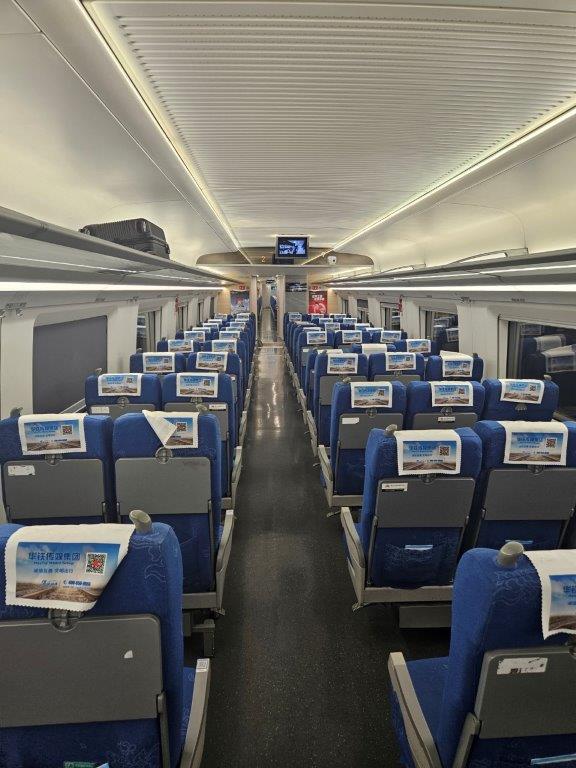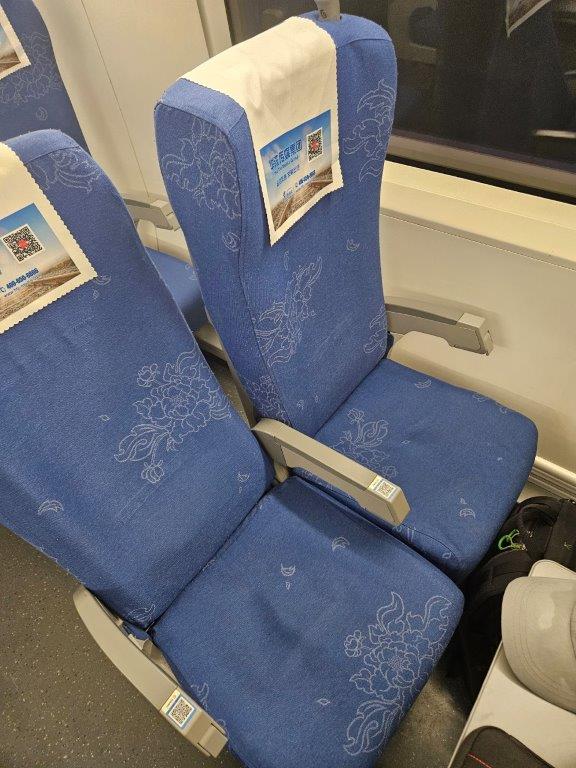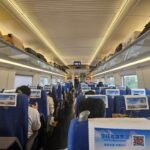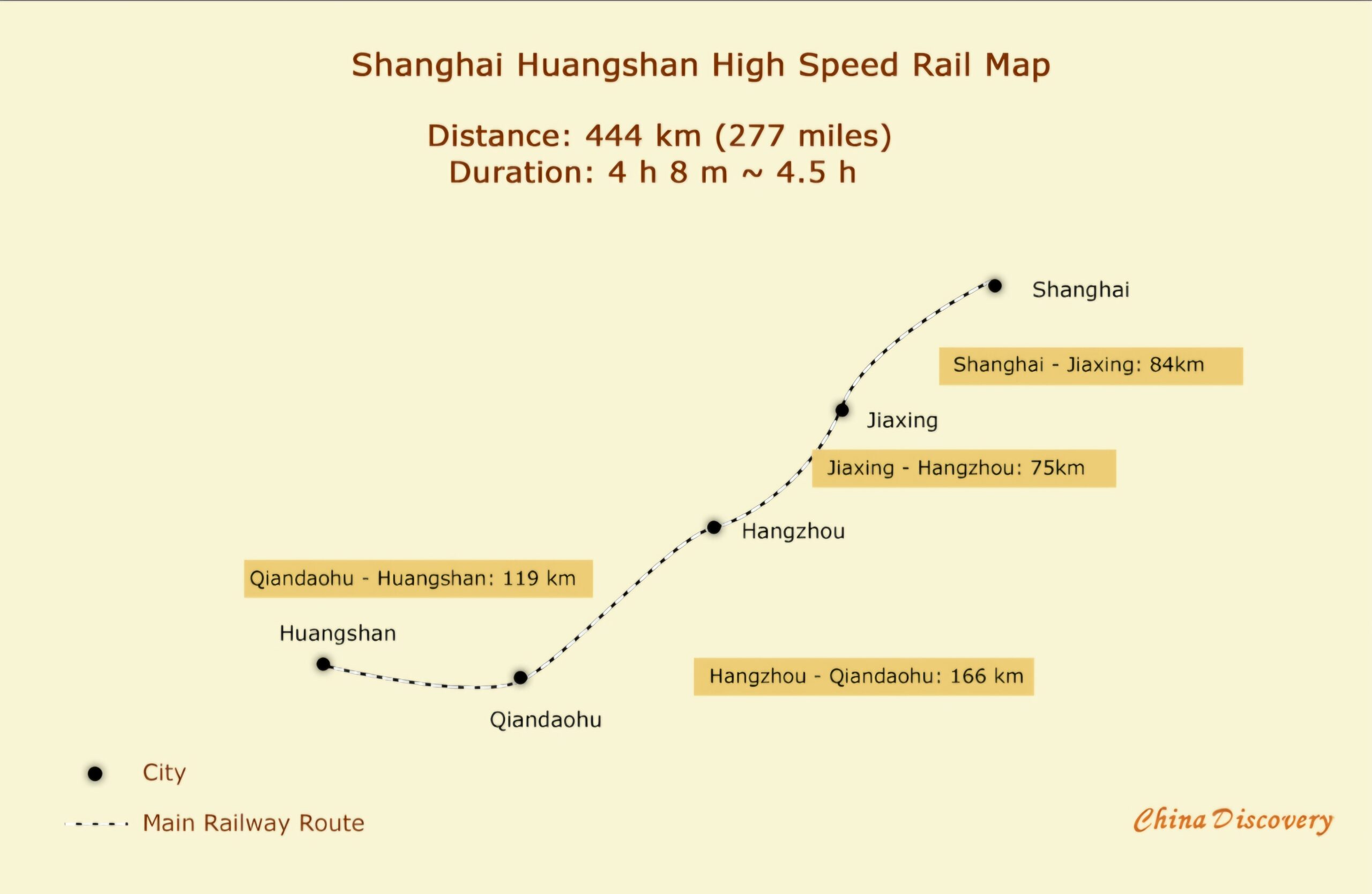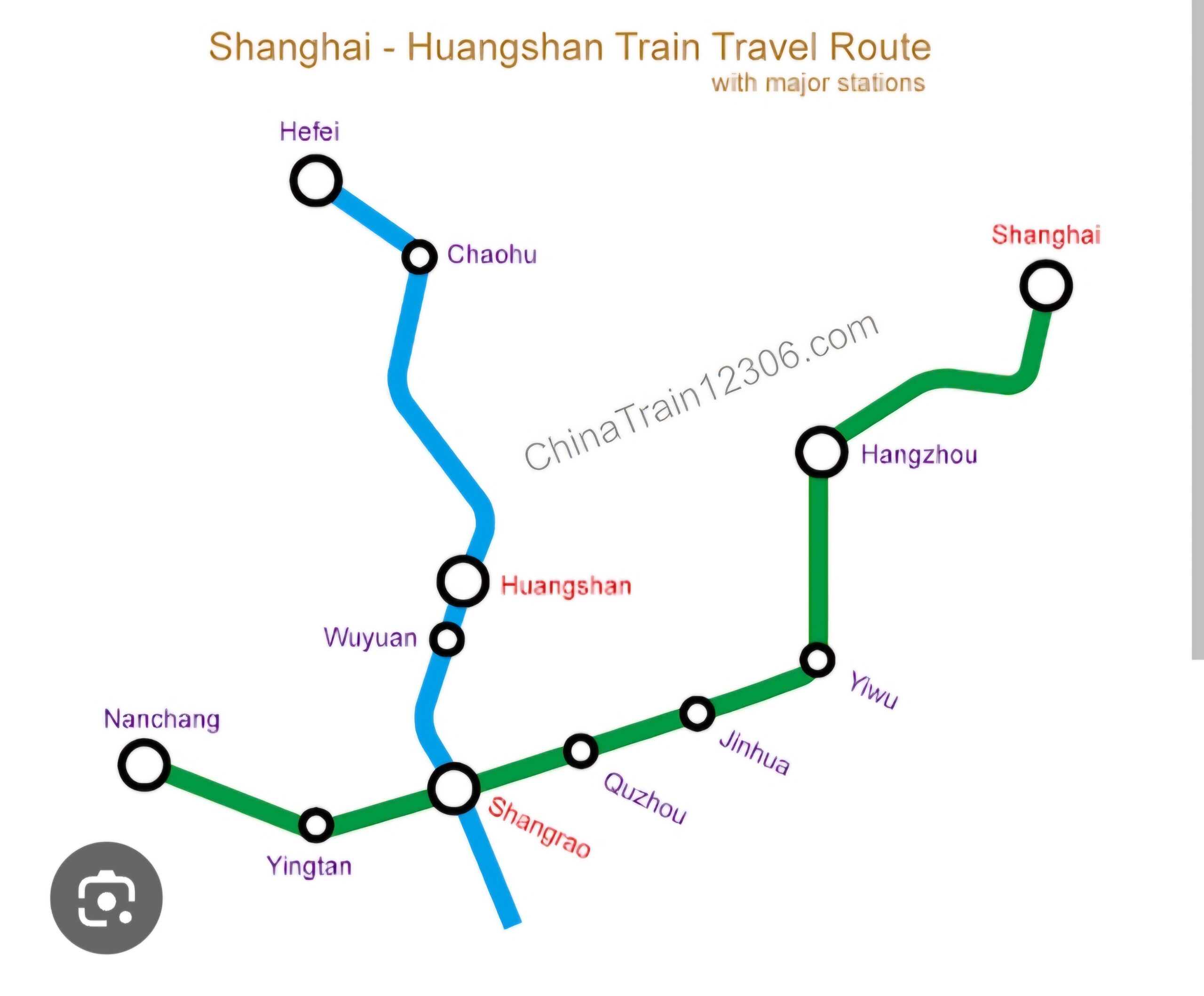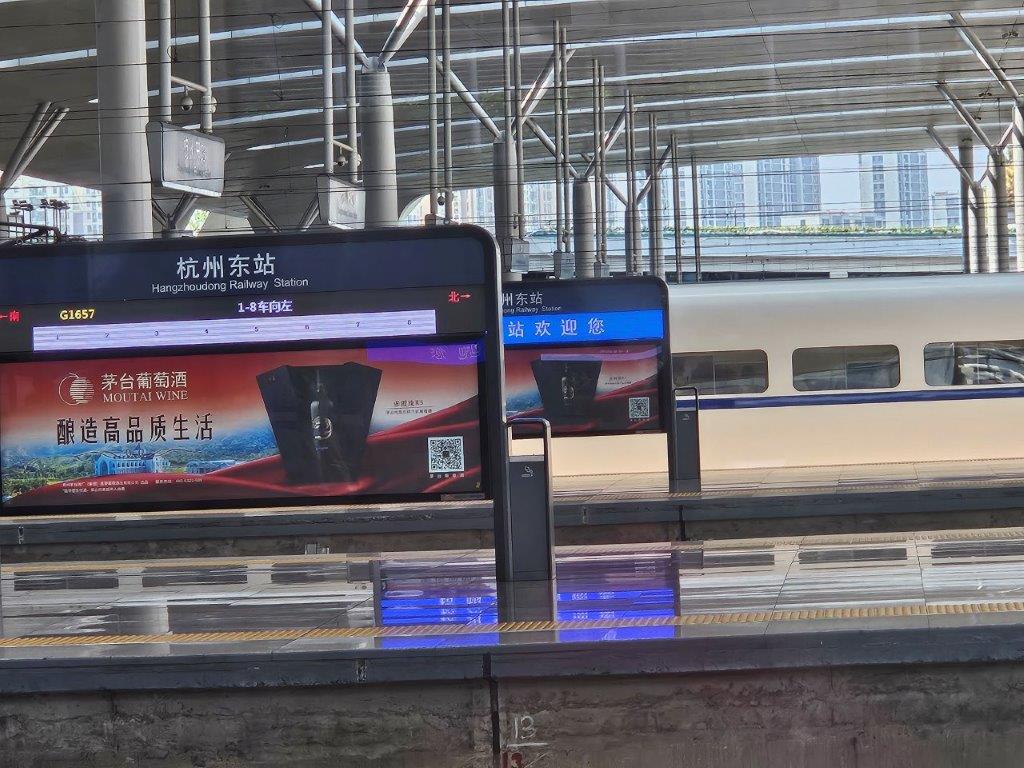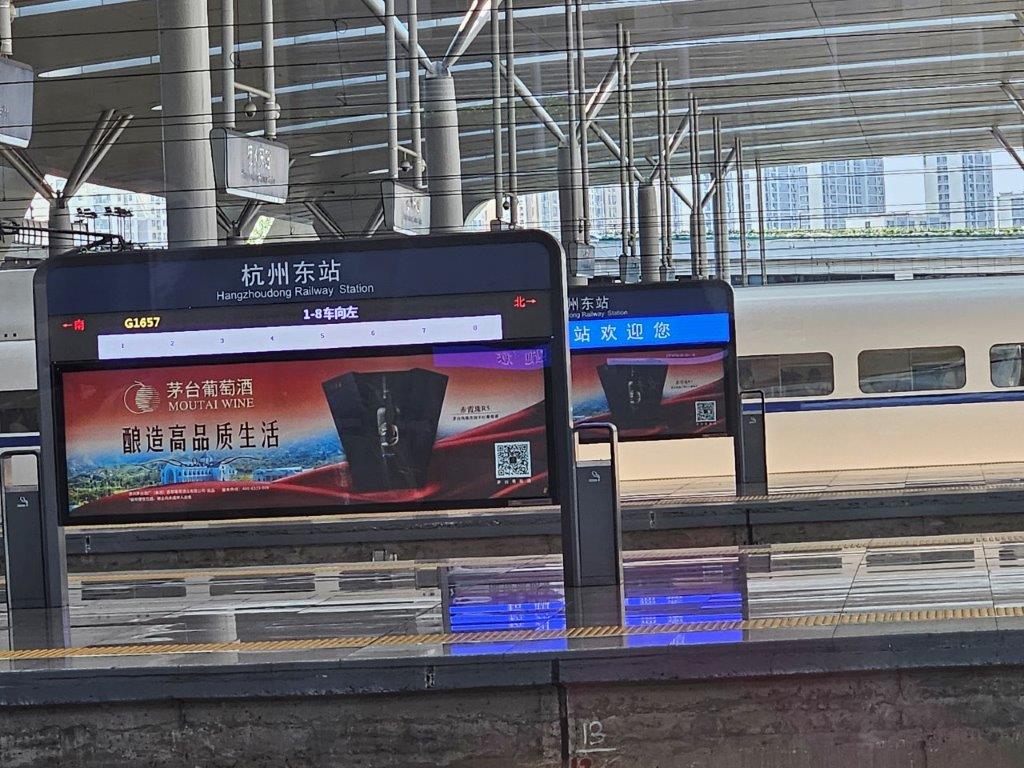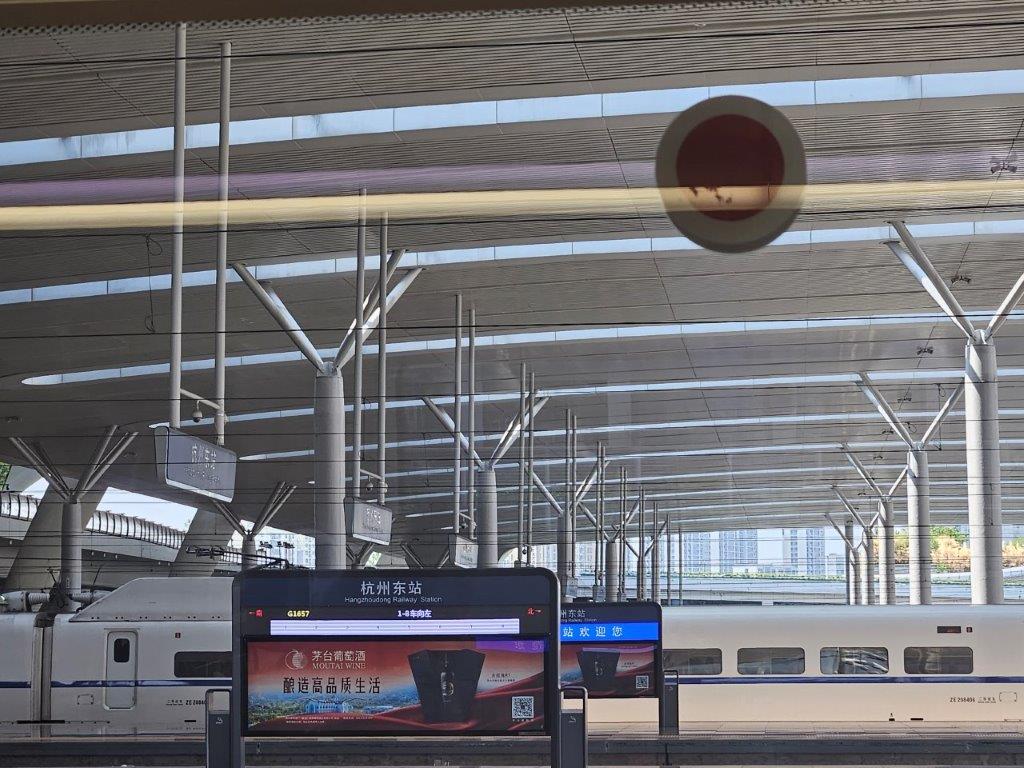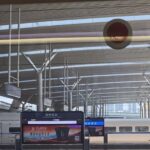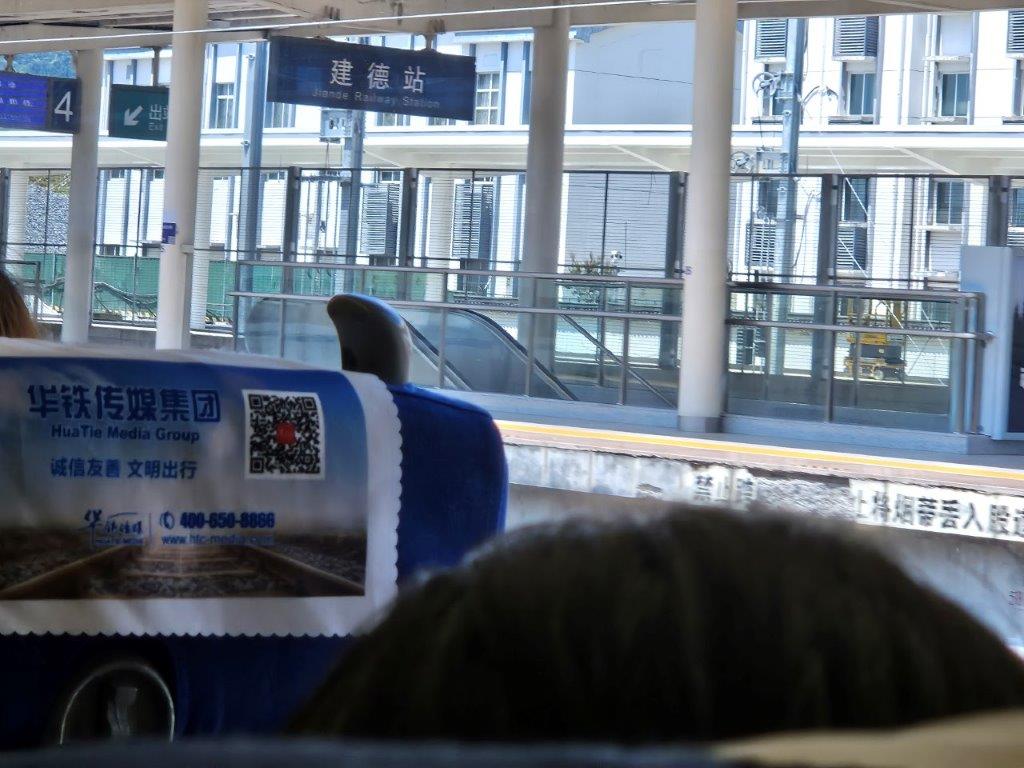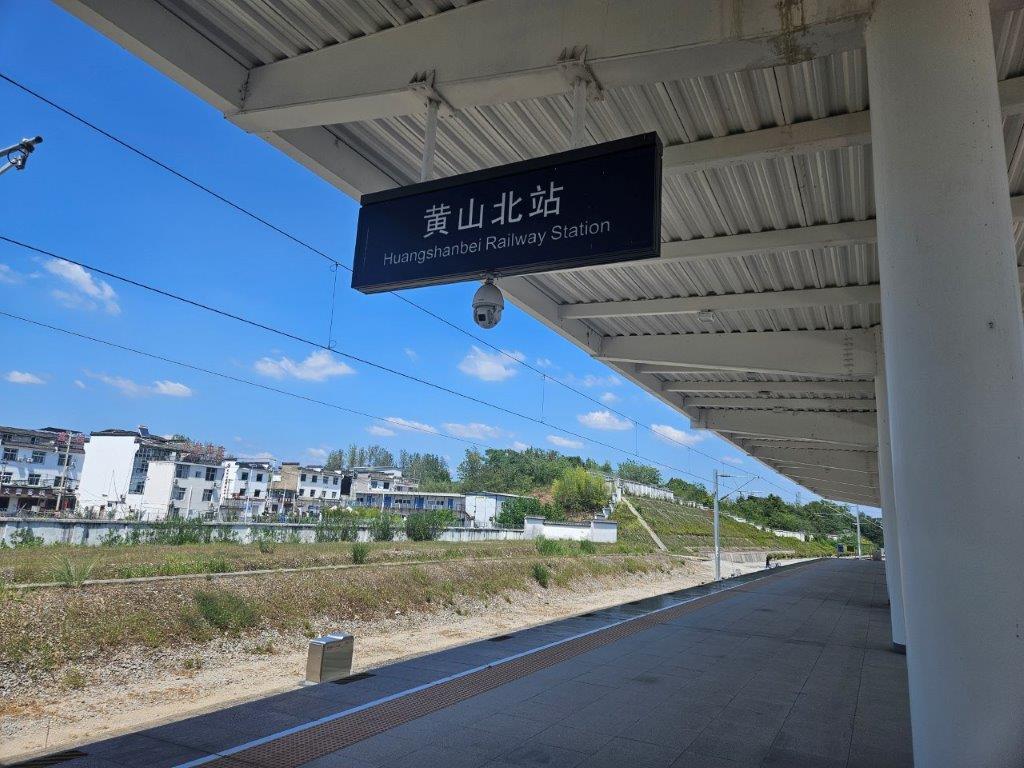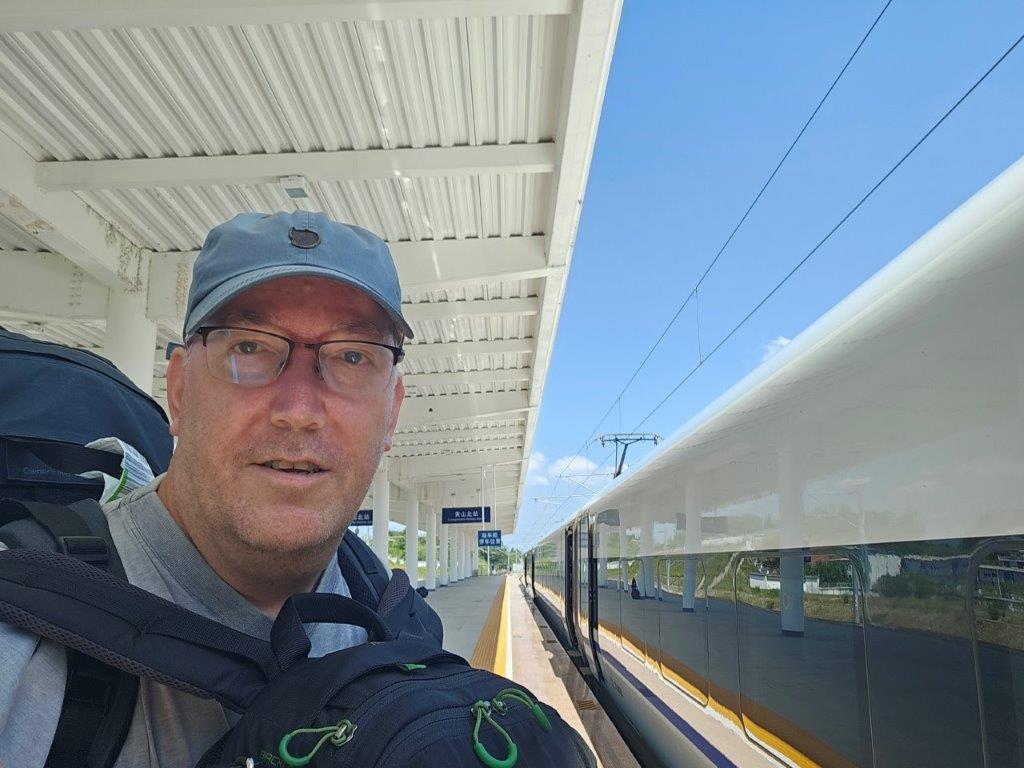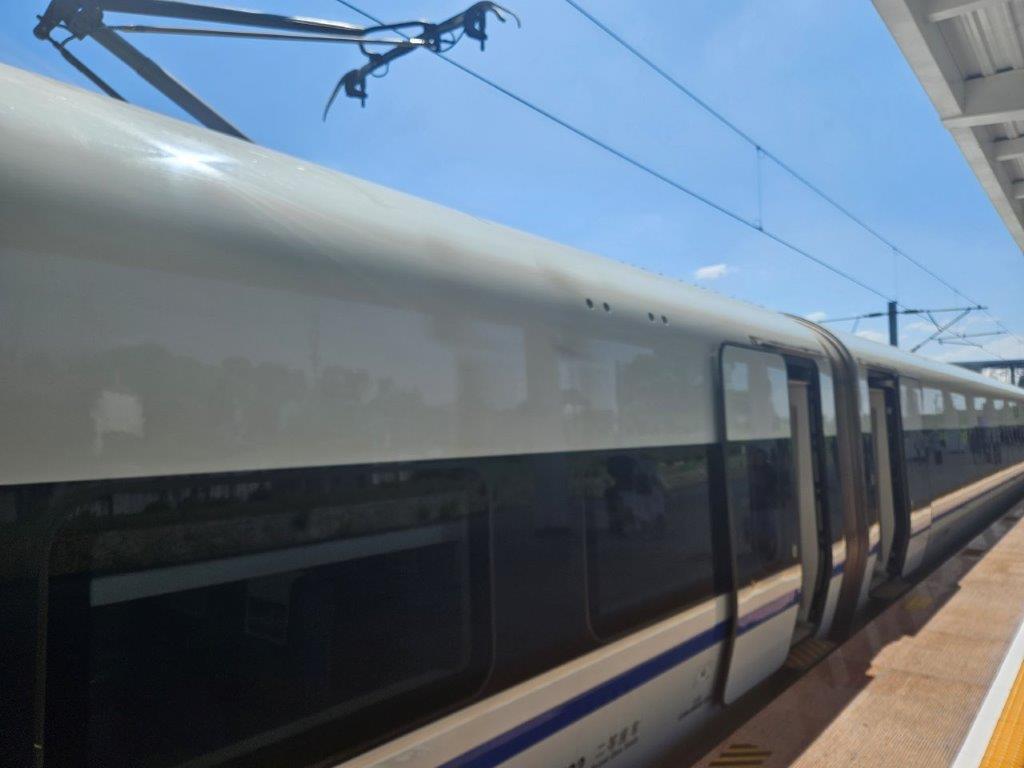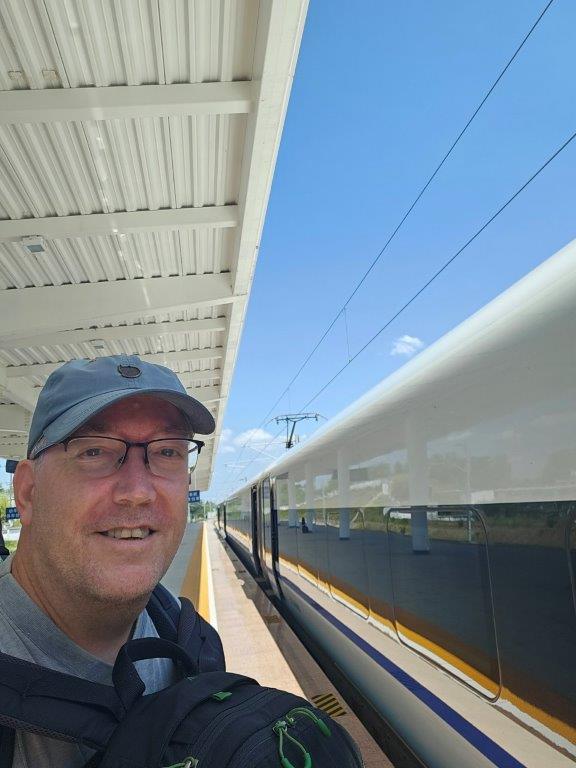4. China by train: Practical tips how to take a train in China and Travelling by train from Shanghai to Huangshan City/Anhui
As an overall title for these travel adventures through Central and Southwest / South China, I chose:
And that is exactly what it is, but then about 40 years later than he did. China has changes a lot. It modernised a lot, it changed politically a lot and its railway network and trains changed a lot too. Now The Wandelgek has travelled before by train through China and has thus experince with how Paul Theroux must have travelled through China. He partly travelled under the same conditions in 2004, and even 2019. E.g. the travels Paul made to the West of China and of course his very first travels with the vTrans Siberian and Trans Mongolian railways were more or less matched by The Wandelgek in those years.
But now The Wandelgek was gonna travel by train in Central and in South and Southwestern China over a distance of over 3000 kilometers, in only 15 days (read the blogpost mentioned above to discover why). This practically was only possible when making use of the bullet train network which China stamped out of the ground between 2008 and 2020. Paul Theroux did not travel by bullet trains, so here follows an account of travelling by train through modern China.
After a not so early rise, which was luckily possible because The Wandelgek’s first train left the station at about 10.00 PM. Luckily; because he had gotten in bed quite late (experiencing a bit of Shanghai’s nightlife after a very hot day) and needed to recover a bit from the 16 hrs of flight on the previous days.
Before checking out, The Wandelgek took a quick hot shower and then went down for breakfast…
 He decided to start safe with a more or less English style breakfast …
He decided to start safe with a more or less English style breakfast …
 Then he went up to gather his luggage.
Then he went up to gather his luggage.
He drove towards the Shanghai Railway Station by cab, driver and a guide to help at the railway station included. The ride from Central Shanghai towards the outskirts is quite interesting. There’s a lot of high buildings in Shanghai, almost no low one, two or three floor buildings. Sound screens are a necessity in lots of places, to reduce the noise of the traffic which is passing by these high buildings where people live or work.
Slowly driving though the city center because there is a lot of traffic, however no traffic jam…
The amount of flowers beside the roads was humongous …
And the suddenly The Wandelgek past a building like a temple, which he had seen before on a commercial sign in the metro last night and which immediately intrigued him. What could it be? The guide knew. It was the:
Shanghai Exhibition Center
The Shanghai Exhibition Centre or the Shanghai Exhibition Hall is an exhibition and convention centre in central Shanghai. The building was built in 1955 as the Sino-Soviet Friendship Building to commemorate the alliance between China and the Soviet Union, a name by which many locals still refer to the building. Reflecting its original name, the design draws heavily on Russian and Empire style neoclassical architecture with Stalinist neoclassical innovations.
It really does have some similarities with the so called Stalinist Sisters, a series of buildings in Moscow, which are a lot bigger though. Read more and see for yourself at:
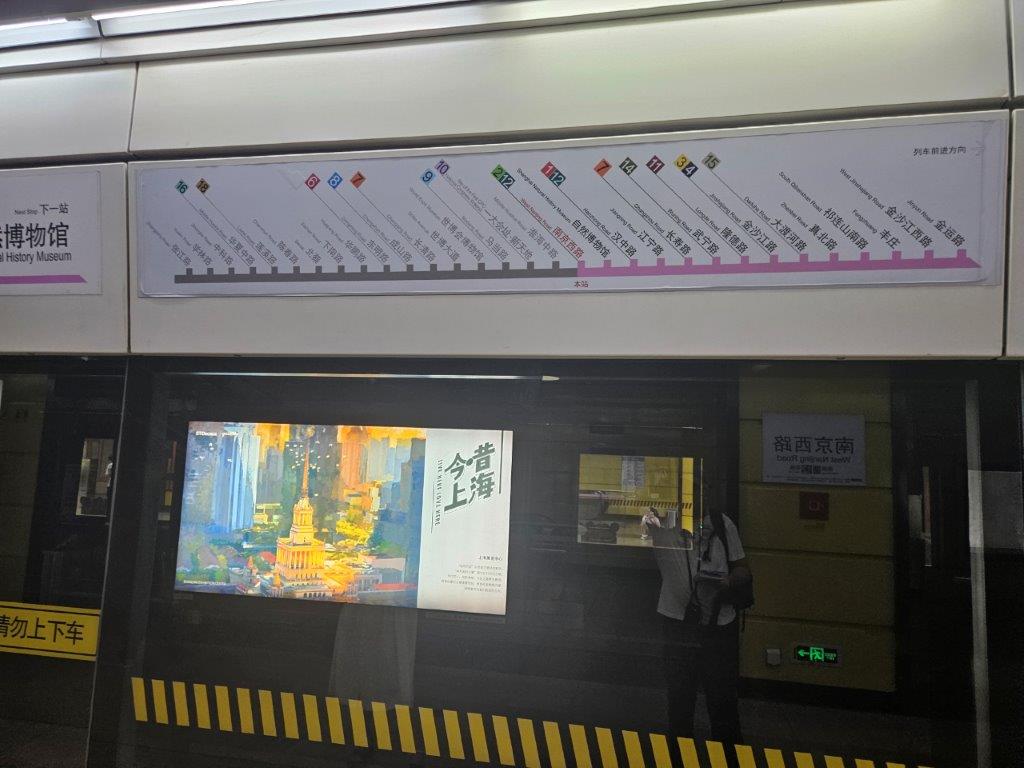 The building is a major landmark in Shanghai. At 93,000 square metres, it is one of the largest integrated building complexes in central Shanghai by footprint. At 110.4 metres (to the top of spire), it was for decades (1955–1988) the tallest building in Shanghai. Its main frontage, an open quadrangle with an elaborate central tower, faces Yan’an Road, today the main east–west artery across central Shanghai, while its secondary façade, a colonnade, faces West Nanjing Road, one of the premier retail and commercial streets of Shanghai.
The building is a major landmark in Shanghai. At 93,000 square metres, it is one of the largest integrated building complexes in central Shanghai by footprint. At 110.4 metres (to the top of spire), it was for decades (1955–1988) the tallest building in Shanghai. Its main frontage, an open quadrangle with an elaborate central tower, faces Yan’an Road, today the main east–west artery across central Shanghai, while its secondary façade, a colonnade, faces West Nanjing Road, one of the premier retail and commercial streets of Shanghai.
Then The Wandelgek passed another interesting looking building, with a very ancient Chinese style and lots of golden ornaments on top of the many roofs. it was the:
Jing’an Temple
Jing’an Temple (meaning: ‘Temple of Peace and Tranquility’) is an esoteric Tangmi Buddhist temple on the West Nanjing Road in Shanghai. Jing’an District, where it is located, is named after the temple.It had actually been on the Wandelgek’s bucketlist, to visit this, but the enormous heat yesterday (today it seemed a bit cooler, but it was still very early), made The Wandelgek rethink his plans.
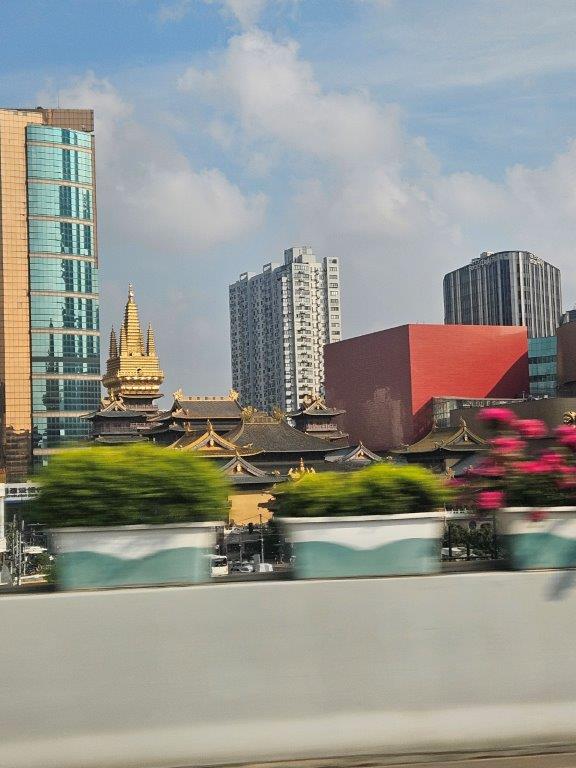 The original temple was first built in 247 AD in the Wu Kingdom during the Three Kingdoms period of ancient China. Originally located beside the Suzhou Creek, it was relocated to the Jing’an site in 1216 during the Song dynasty. The temple was rebuilt in the Qing dynasty but, during the Cultural Revolution, the temple was razed and turned into a plastic factory. In 1983, the site was returned to its original purpose and the temple rebuilt. Over the years, the temple has been expanded, with the Jing’an Pagoda being completed in 2010. In 1953, Master Chisong (释持松), a monk who had been initiated into the Shingon sect and was trained as an acharya, was appointed abbot of the temple. He re-established the temple under the Tangmi Buddhist tradition and enshrined the Mandala of the Two Realms within the temple. In contemporary times, the temple still officially practices Tangmi Buddhism. On December 19, 2009, a 15-ton silver statue of Buddha Rudra cast in pure silver was installed in Jing’an Temple. More than ten 3-ton silver statues of the Bodhisattva and the disciples were added to the Daxiongbao Hall.
The original temple was first built in 247 AD in the Wu Kingdom during the Three Kingdoms period of ancient China. Originally located beside the Suzhou Creek, it was relocated to the Jing’an site in 1216 during the Song dynasty. The temple was rebuilt in the Qing dynasty but, during the Cultural Revolution, the temple was razed and turned into a plastic factory. In 1983, the site was returned to its original purpose and the temple rebuilt. Over the years, the temple has been expanded, with the Jing’an Pagoda being completed in 2010. In 1953, Master Chisong (释持松), a monk who had been initiated into the Shingon sect and was trained as an acharya, was appointed abbot of the temple. He re-established the temple under the Tangmi Buddhist tradition and enshrined the Mandala of the Two Realms within the temple. In contemporary times, the temple still officially practices Tangmi Buddhism. On December 19, 2009, a 15-ton silver statue of Buddha Rudra cast in pure silver was installed in Jing’an Temple. More than ten 3-ton silver statues of the Bodhisattva and the disciples were added to the Daxiongbao Hall.
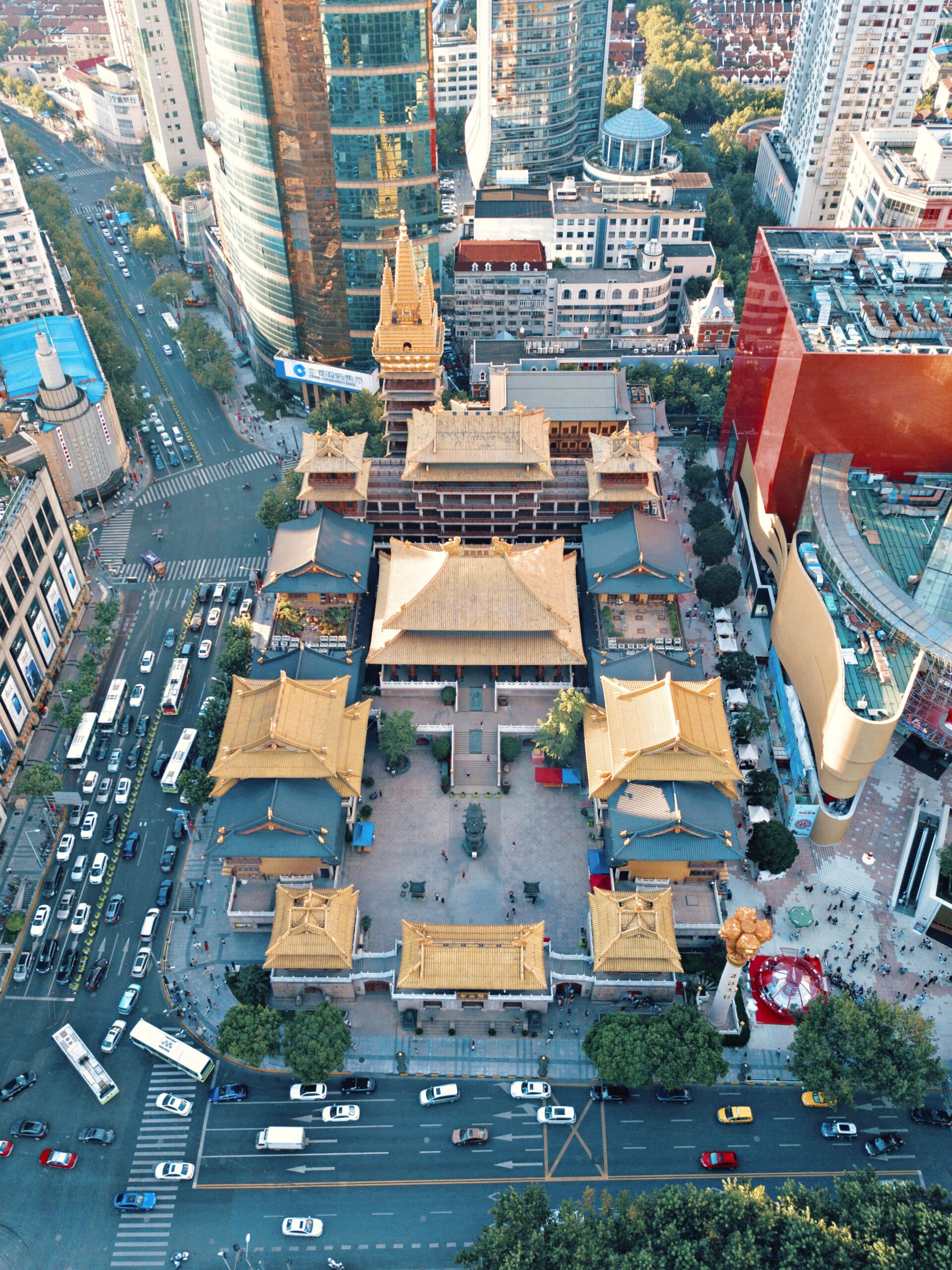
By Legolas1024 – Self-photographed, CC BY-SA 4.0, https://commons.wikimedia.org/w/index.php?curid=72626978
The Wandelgek now started to get near the airport (it had been a drive of over an hour to get there).
Shanghai Railway Station
 Near the hotel in the city center was an old Railway Station, but this was not the railway station from where the bullet trains entered or left Shanghai. At the city’s rim was an airport and next to it was a quite new modern railway station.
Near the hotel in the city center was an old Railway Station, but this was not the railway station from where the bullet trains entered or left Shanghai. At the city’s rim was an airport and next to it was a quite new modern railway station.
 Today was my 1st train travel day on this new adventure. Train travel is very special. 1st trip is from Shanghai to Huangshan city by bullet train (high-speed train). The new railway station (Shanghai Hongqiao Railway Station) is located next to an airport on the verge of Shanghai.
Today was my 1st train travel day on this new adventure. Train travel is very special. 1st trip is from Shanghai to Huangshan city by bullet train (high-speed train). The new railway station (Shanghai Hongqiao Railway Station) is located next to an airport on the verge of Shanghai.
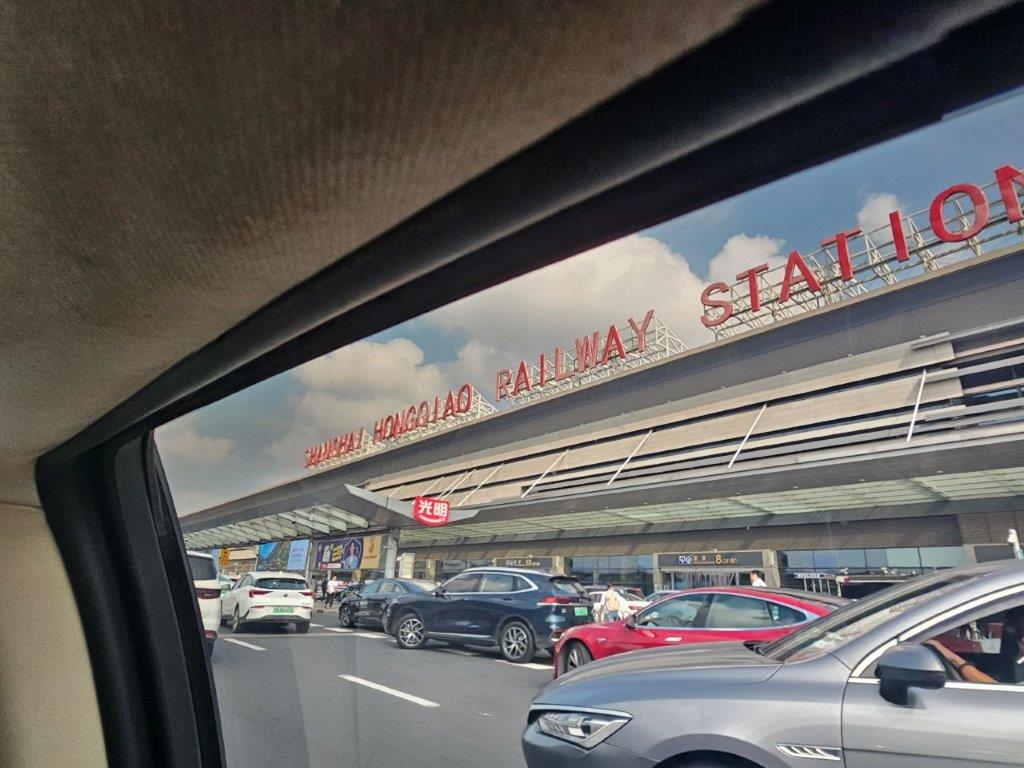 After entering the station’s main hall, it seems like a huge ant hill, but this is unexpectedly well organized and much more efficient than, for example, the train system in the Netherlands. It does mean that you have to be present 1 hour in advance, because the checking in process is time-consuming. Train travel here is more comparable to taking a domestic flight than to commuter traffic and day trip traffic in the Netherlands. But let me explain a bit more about:
After entering the station’s main hall, it seems like a huge ant hill, but this is unexpectedly well organized and much more efficient than, for example, the train system in the Netherlands. It does mean that you have to be present 1 hour in advance, because the checking in process is time-consuming. Train travel here is more comparable to taking a domestic flight than to commuter traffic and day trip traffic in the Netherlands. But let me explain a bit more about:
How to take a train in China
There are 5 steps to remember, everytime you take a bullet train. I’m not sure if this also counts for none bullet trains, because my experience with those was from the past and was really different, but here I’ll explain the process for bullet train (or high speed train travel).
1. Arriving early (1 hour before departure time is quite a good advise) at the train station, get your train ticket and passport ready for check. If you haven’t bought a ticket yet, buy a ticket at the ticket lobby first.
2. Get through the security check (which is basically a passport and luggage check) and have your tickets checked.
3. Wait for your train at the assigned waiting hall.
4. Line up to check in (for which again you need your passport or if you live in China an ID card) and find the assigned platform and the right marked spot on the platform where your carriage will stop to board your train.
5. Board your train as quickly as possible.
Some important tips: Checking in at China’s railway stations, usually starts 20 to 30 minutes (15 to 20 minutes for bullet trains) before the train departs (time is on your ticket). In big cities like Beijing, Shanghai and Guagzhou, the railway stations are really large and crowded, so arriving 1.5 hours before departure time is not a luxury, but can help you to board your train on time. There are certain festivals like Spring Festival and also at the National Holiday week in October, where an arrival 2 hours before departure time is best. Remeber this: Trains are always punctual and being in the wrong place or not having enough time to get to the check in on time, almost always results in missing your train.
Then some steps which can be taken before you arrive at the railway station.
- Find the correct Railway Station for your train: This seems obvious, but many cities in China have multiple railway stations (China is still the 2nd most populous country in the world and many cities are quite large). E.g.: There are 3 railway stations in Guilin, Xian and Kunming, 4 railway stations in Shanghai, and even 5 railway stations in Beijing. So check your ticket upfront and find the right departure railway station, departure date and time. If you end up in the wrong station, than that will almost certainly mean you’re going to miss your train, because of the traffic and the large distances between the railway stations. When taking a taxi, you can show your railway ticket to the driver, so he knows whether to rush or relax and which railway station to go to.
- Security Check: After entering the station, there is 1st a security check. Passengers need to present a valid ticket and either an ID certificate or a Passport (for foreigners) to get into the station. Put all your luggage on the security check scanner and have yourself checked as well by the security staff. Next pass the channel quickly and do not forget any of your luggage. Prohibited articles found in your luggage will be confiscated. The Wandelgek had a 200 ml cannister of shaving gel in his luggage, but cannisters (and the content does not matter) are only allowed when they have a content of 160 or less ml. Thus this cannister was found and confiscated. It probably also led to an extra luggage check when The Wandelgek left the China.
- Get to the right waiting hall and wait for your train to arrive: After passing through the security channel, find your waiting room / hall according to the train’s number. There are large electronic boards after the security channel which indicate which trains leave where and when. It is actually very similar to air travel. The electronic boards give you information about the train schedule, date, time, destination status, waiting room / hall and sometimes platform (specificly in the larger cities, the platform is mentioned too, but be aware to check this information regularly because it might change). Whenever you got a hold on the number and the departure time of your train, it is relatively easy to find your train.
- Language: In big cities, information signs are both in Chinese and in English, but in smaller towns or in villages, you’ll have to deal with completely Chinese information only. A translation app can be usefull in such instances.
- Time to board: This is quite important to understand. Chinese bullet and high speed trains which are categorized as D, G and C trains), stop only for about 5 minutes, even less in small stations, so you must make very sure that you are in the correct waiting room or even at the correct check in entrance in the large waiting halls (like e.g. the one in Shanghai).
- Get onto the platform: You either wait in the waiting room or at the Check in entrance (there are plenty of chairs to sit). In China the checking in always starts 30 minutes before departure time for normal trains and 15 to 20 minutes before departure for bullet and high speed trains (G, C & D trains). Above the entrance to the correct platforms, where you are supposed to check in, is a sign which shows the trains that are about to arrive and depart soon. These are color coded. Yellow means: Arriving soon, but checking in has not started yet. Green means: Checking in is commencing right now. Please check in as soon as possible. Chinese citizens will check in in the central lines of the entance while foreigners (or better those having a passport instead of an ID card, will check in at the lines on the utmost left and/or right. This is because the passport scanners are only installed at these lines. Red means that the check in is closed, which will be at about 5 to 10 minutes before departure time. Next follow the direction boards to the assigned platform for your train. You can expect quite a long walk from the ticket check in gate to the platform.
- Boarding the train: You’re almost there! 😀 Find your carriage and seat (this is for the smaller stations). At larger stations there are almost always marking on the platforms edge which indicate where your carriage will stop. Go to the right marking and stand in line waiting for your train to arrive. Carriage numbers are printed on your ticket.Each carriage has one or more stewards or stewardesses. Check whether you are entering the right carriage and next find your seat (seat number is printed on the ticket as well). There is space for large luggage near the entrances of each carriage. Other luggage can be stored above your seat. The Wandelgek carried a 75 liter backpack and even that could be stored above the seat. Keep your ticket. You still need it to get out of your arrival station.
Remark: Except for the information on the ticket, The Wandelgek did only need the actual ticket when asking for information. All other instances where he expected to have to show a ticket were covered instead by showing the passport. In China you need your passport to buy a ticket and the passport is coupled with your ticket, so at every check where they ask for your passport, they also get to see your electronic ticket.
Beneath is a little excerpt of how I experienced the first travel by bullet train:
The ride from Shanghai to Huangshan takes approximately from 10.06 to 12.45, so 2 hours and 40 minutes, but you cover a distance of 400 km and there are a handfull of stops included. That is quite a lot kilometers. In the Netherlands this would be cross-border travel. First of all, there is a security check just like at the airport for the bags. Then, if you already have an electronic ticket (which is arranged by my adventure travel agent), you must check in in the large hall at the entrance to the platform for your train. Trains are listed there by number on a screen, red (check-in completed), in yellow not yet released for check-in or in green check-in now. Then you go to the platform, where carriage numbers are printed on the platform edge.
That’s where you have to goto enter your carriage. Then it suddenly goes very quickly and organized. The train arrives 5 minutes before departure and within 5 minutes everyone has gotten on and off and the train leaves again.
The trains are quite comfortable …
A lot of premature research and asking, but once you understand how it works, you’ll notice that the trains depart very efficiently and punctual.
A cup of cappuccino and some snacks brought from The Netherlands are very welcome during the ride.
Meanwhile, the airco keeps you cool.
The train passed stations like Hangzhoudong railway station…
Hangzhou
 Hangzhou is the capital city of the Chinese province of Zhejiang. It is located in northwestern Zhejiang, sitting at the head of Hangzhou Bay.
Hangzhou is the capital city of the Chinese province of Zhejiang. It is located in northwestern Zhejiang, sitting at the head of Hangzhou Bay.
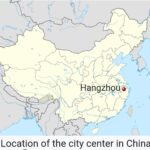 As of the 2020 Chinese census, it had a total population of 11,936,010 inhabitants. Hangzhou ranks ninth in terms of GDP in mainland China. Hangzhou hosts the headquarters of Alibaba Group, Ant Group, and NetEase.
As of the 2020 Chinese census, it had a total population of 11,936,010 inhabitants. Hangzhou ranks ninth in terms of GDP in mainland China. Hangzhou hosts the headquarters of Alibaba Group, Ant Group, and NetEase.
… and Jiande railway station …
Jiande
 Jiande is a county-level city of Zhejiang Province, East China, it is under the administration of the prefecture-level city of Hangzhou.
Jiande is a county-level city of Zhejiang Province, East China, it is under the administration of the prefecture-level city of Hangzhou.
… before finally reaching Huangshanbei railway station …
Arrived!!! My 1st succesful bullet train journey in China.
At about 12.45 The Wandelgek arrived at Huangshan City Railway Station.
The Wandelgek followed the route to the exit, but quickly visited a toilet. Chinese toilets are actually becoming much more modern and much more like western style toilets, but on station you can still find these typical Chinese style public toilets where you have to place your feet on both sides and just bend your knees and crouch …
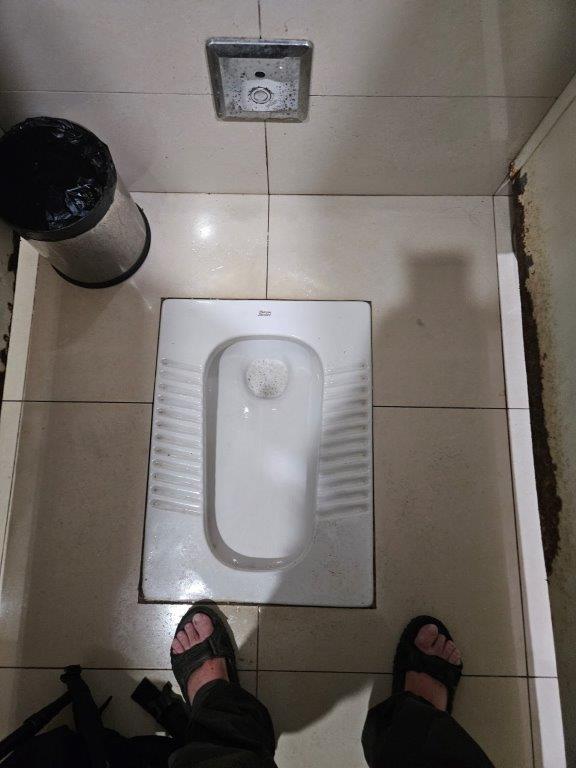
Then proceeding to the exit where again the central lines are for people with an ID card and the lines on the utmost left and right for foreigners having to scan their passport.
My superb guide for the next couple of days named Louise, was already holding up her sign with my family name, welcoming me to the Huangshan area. Let’s start the adventure!!!!

